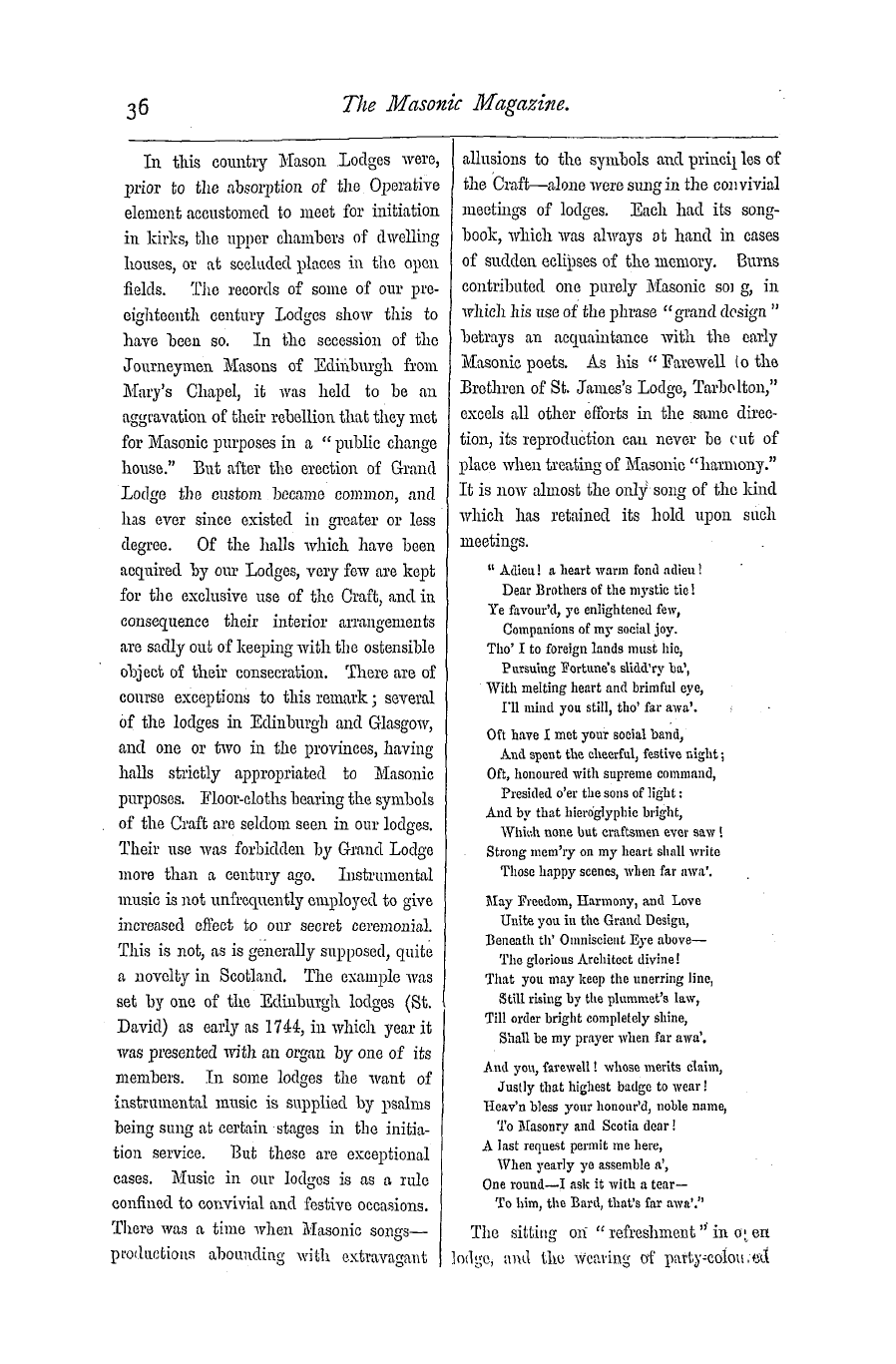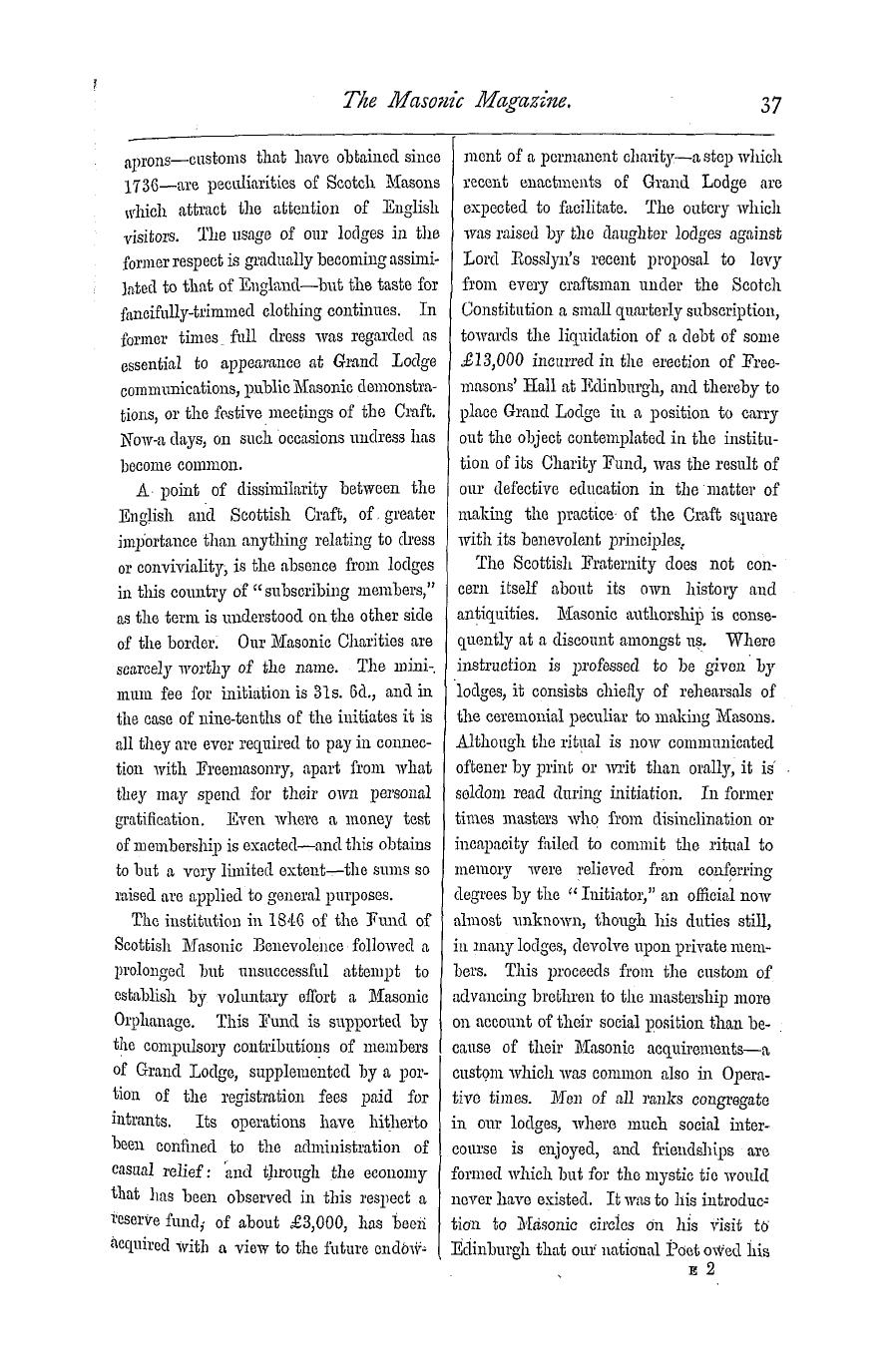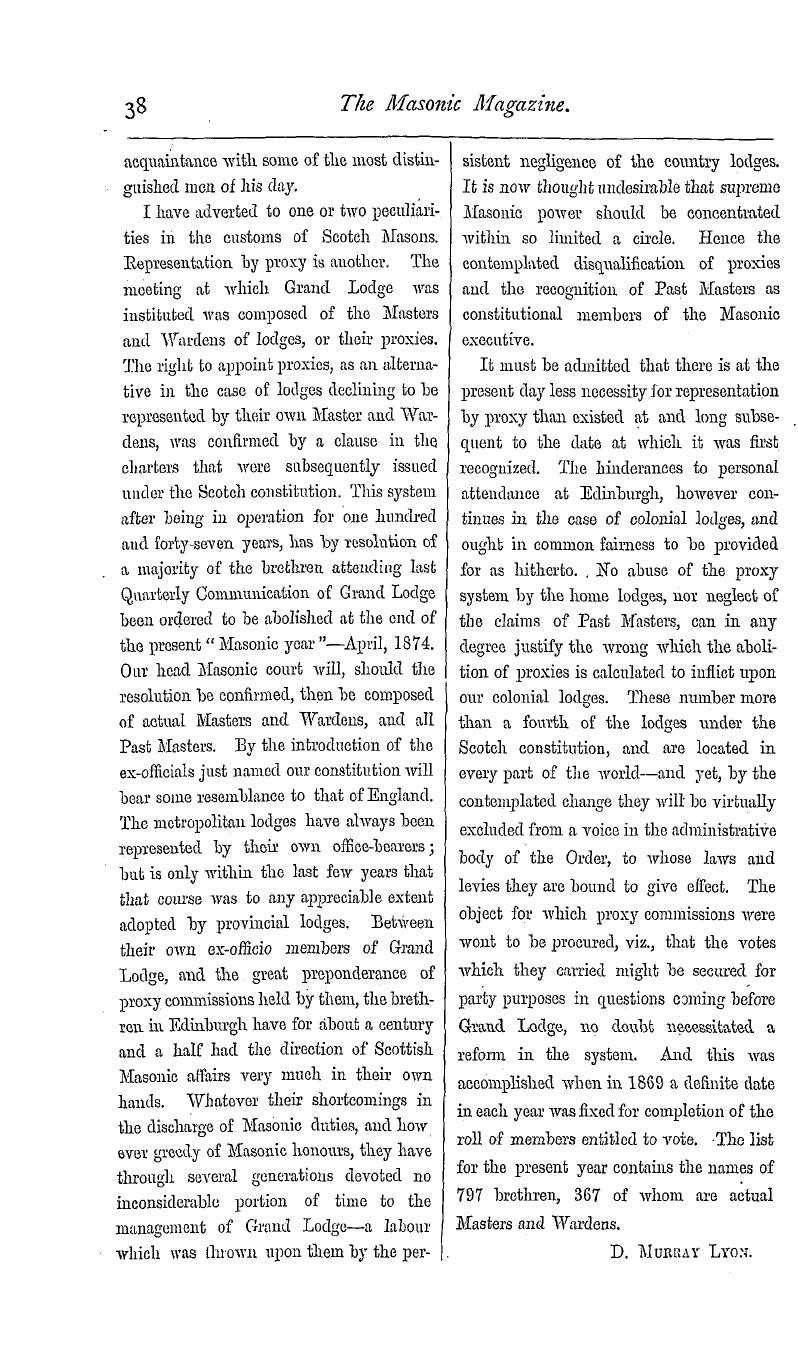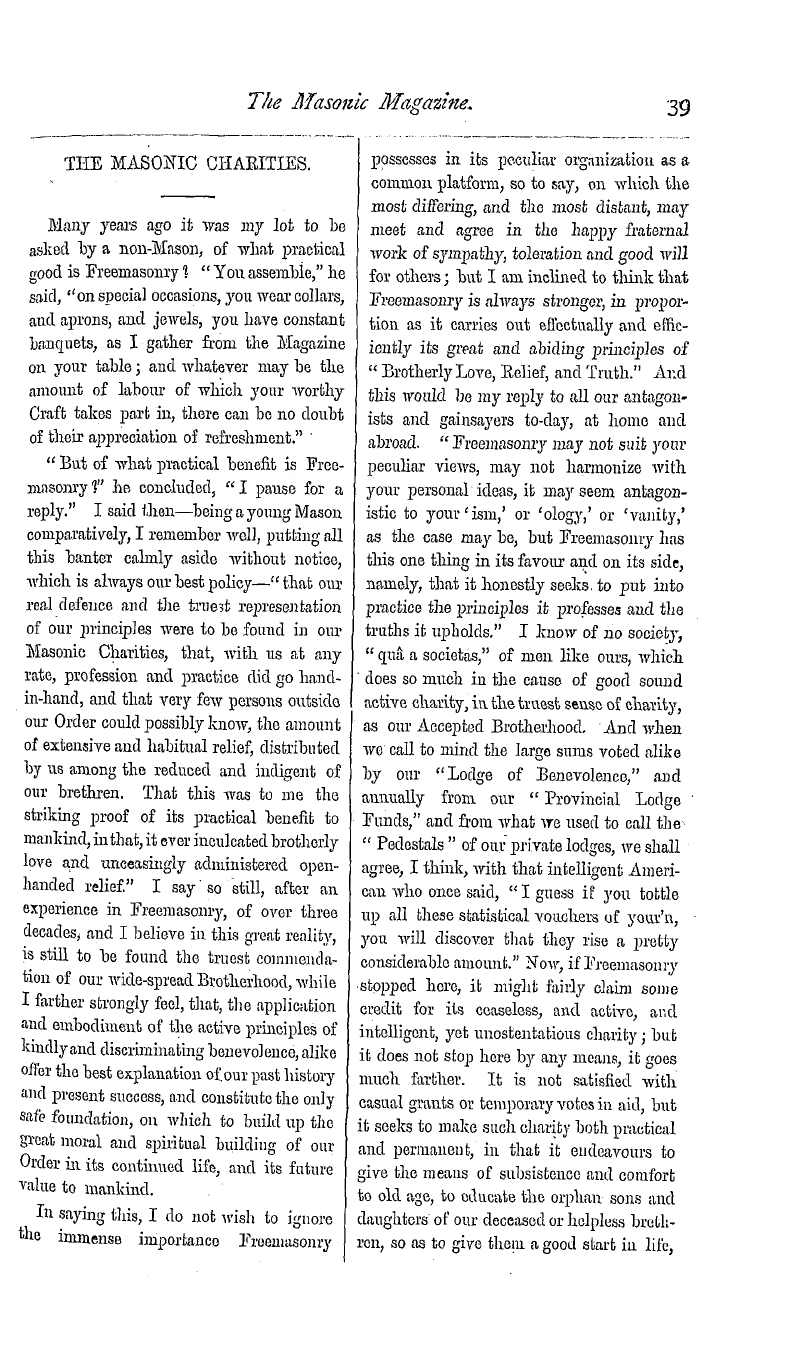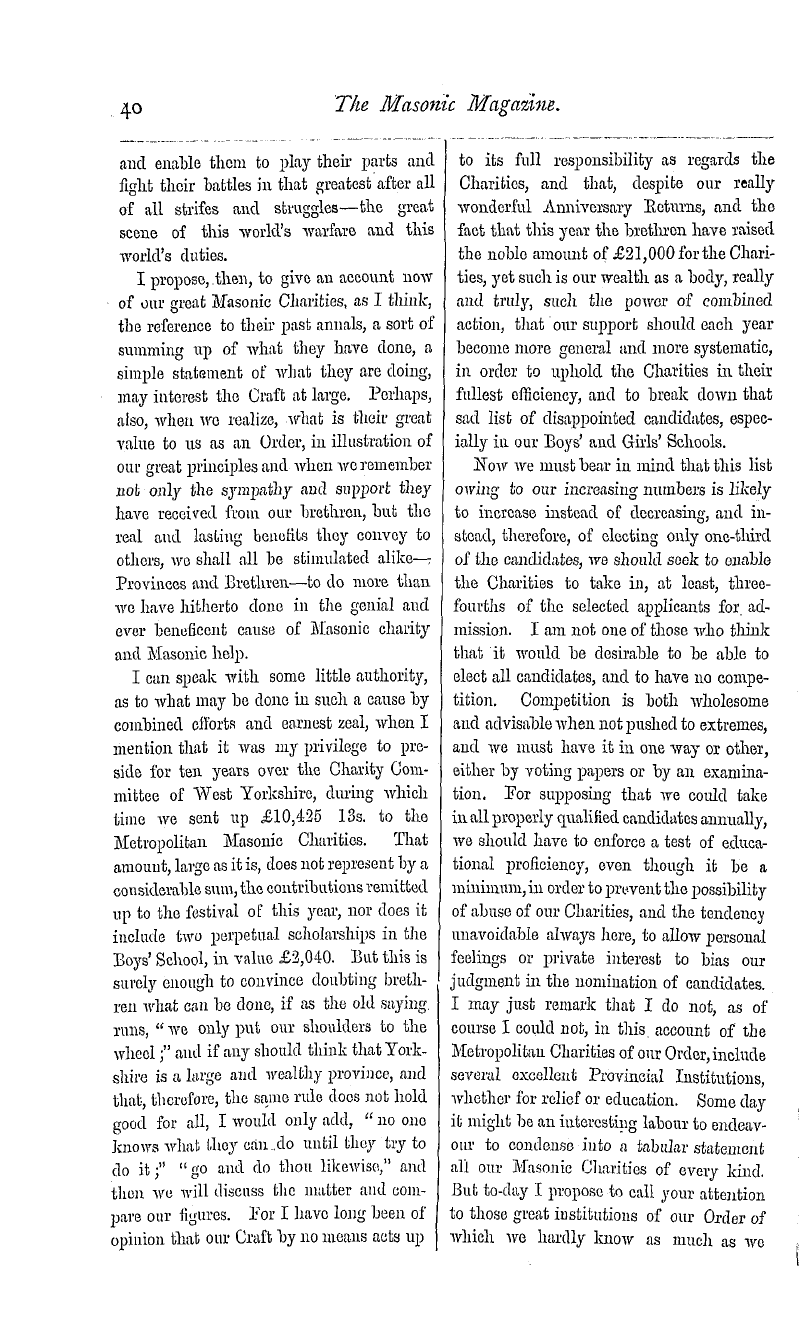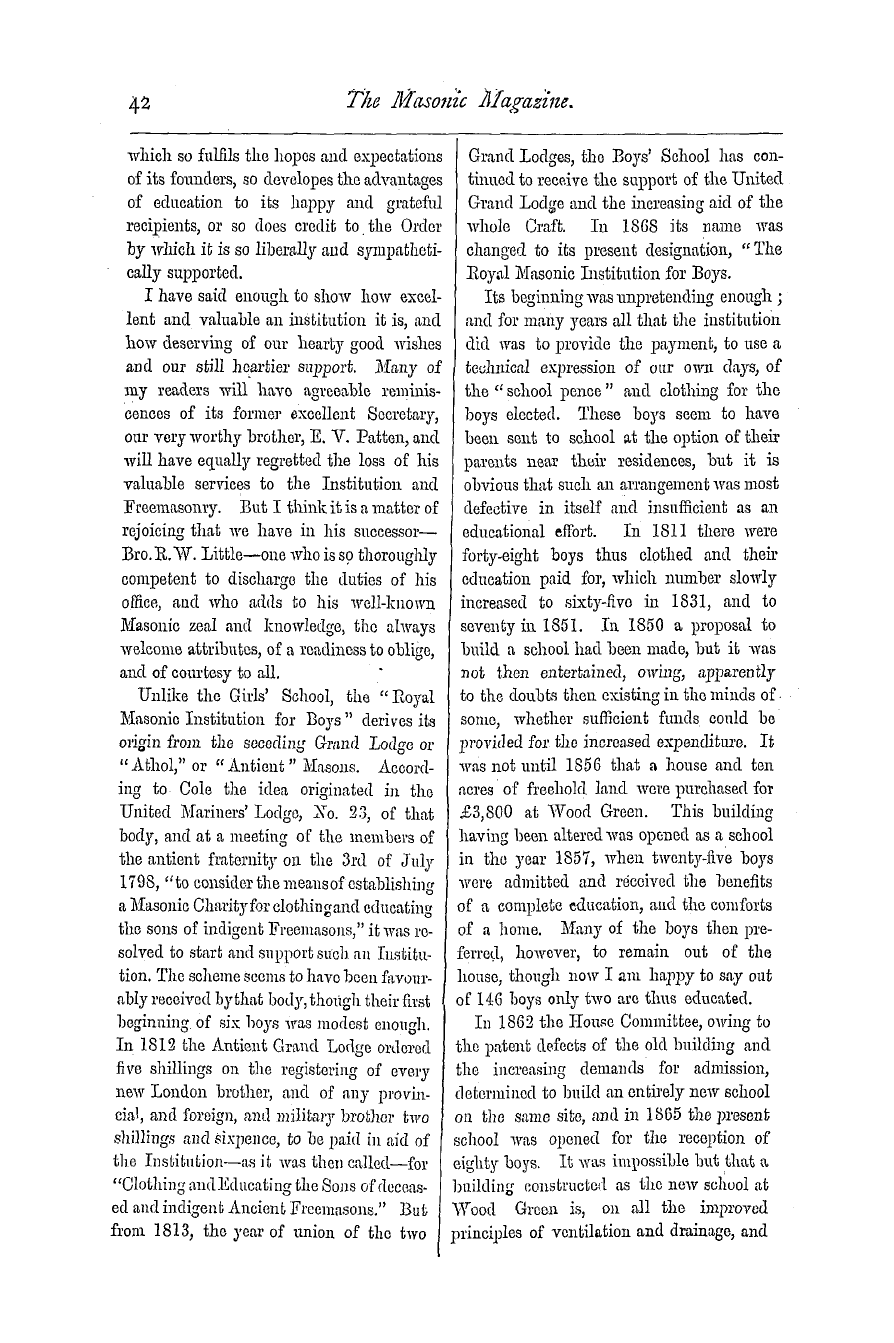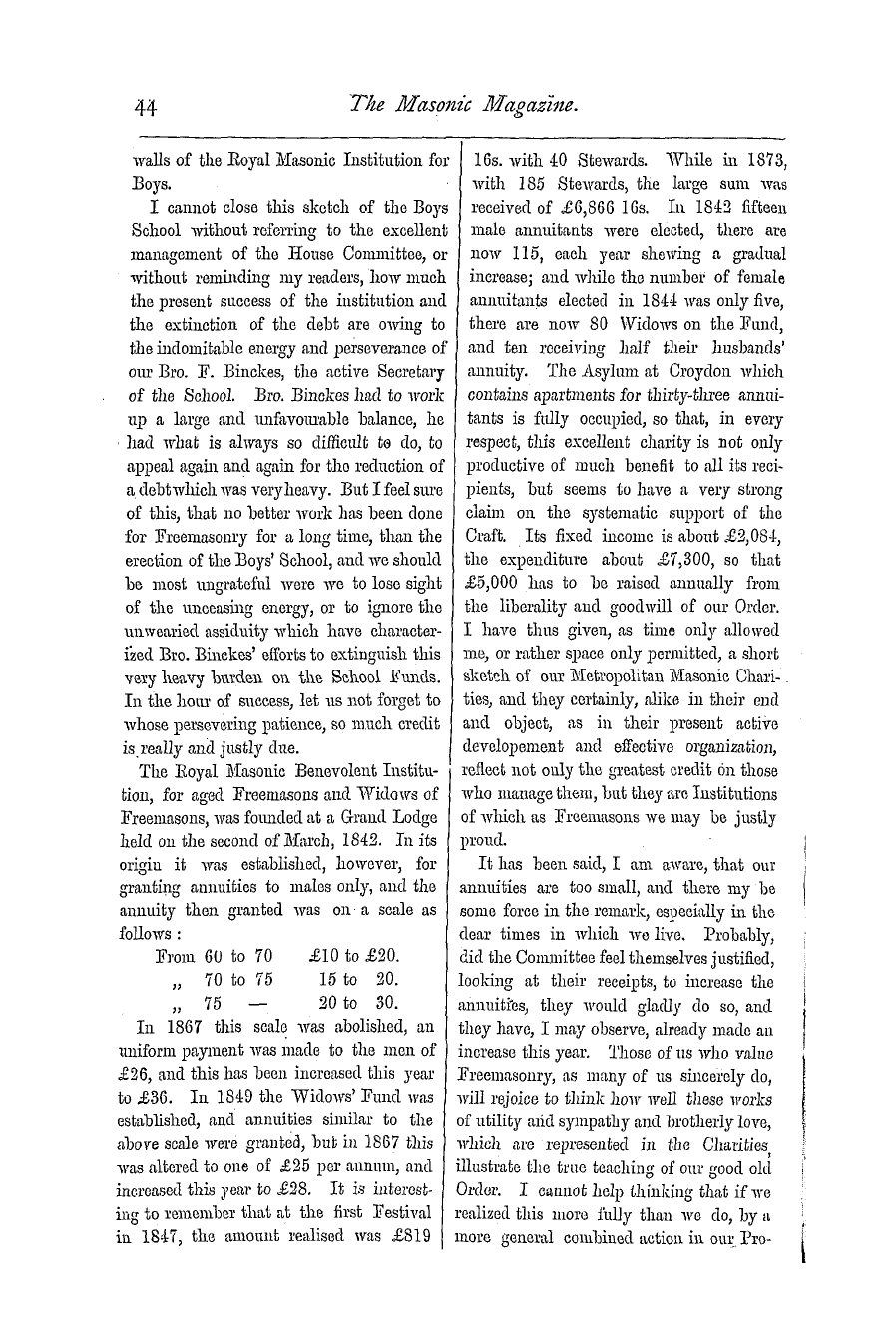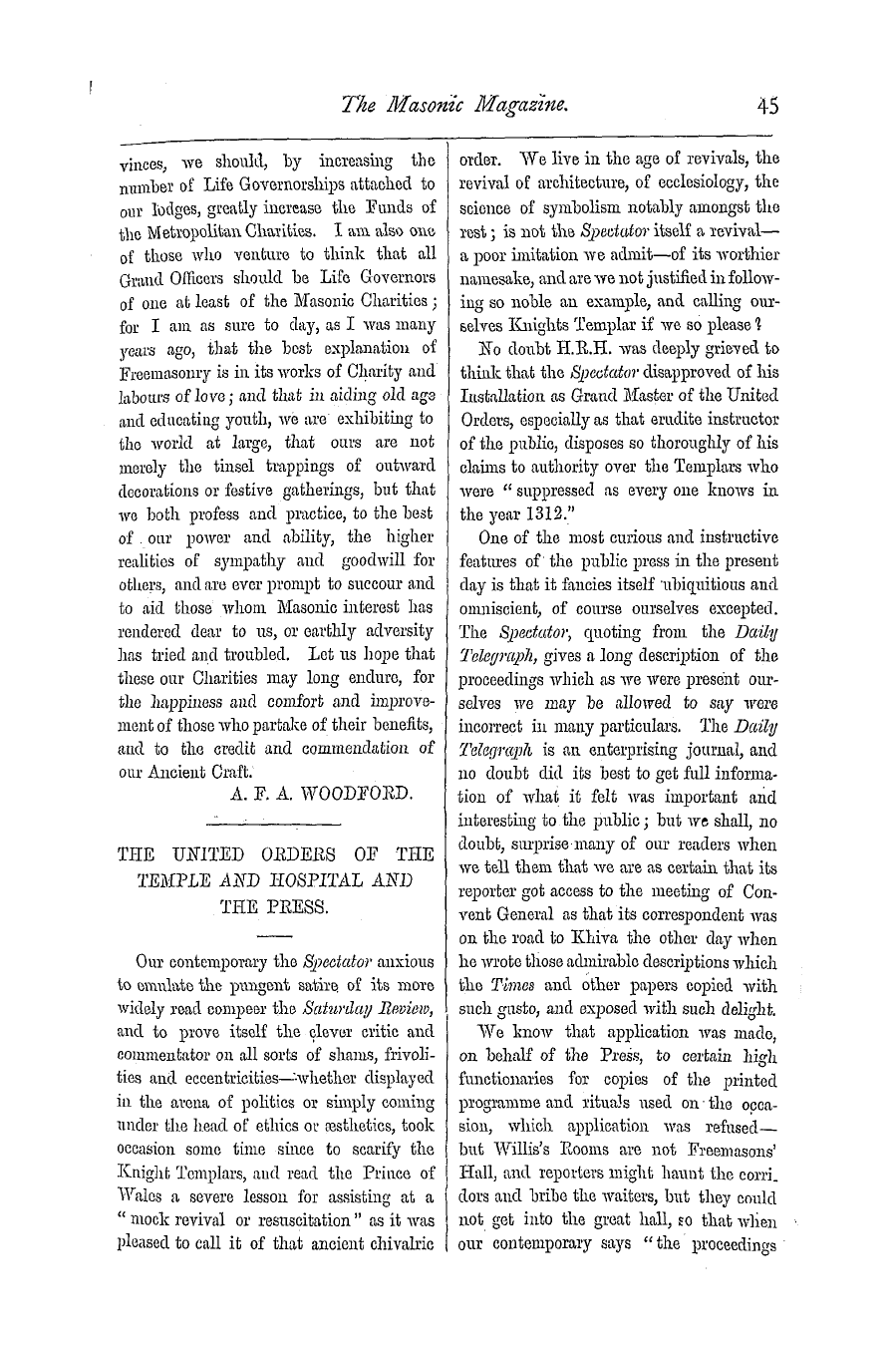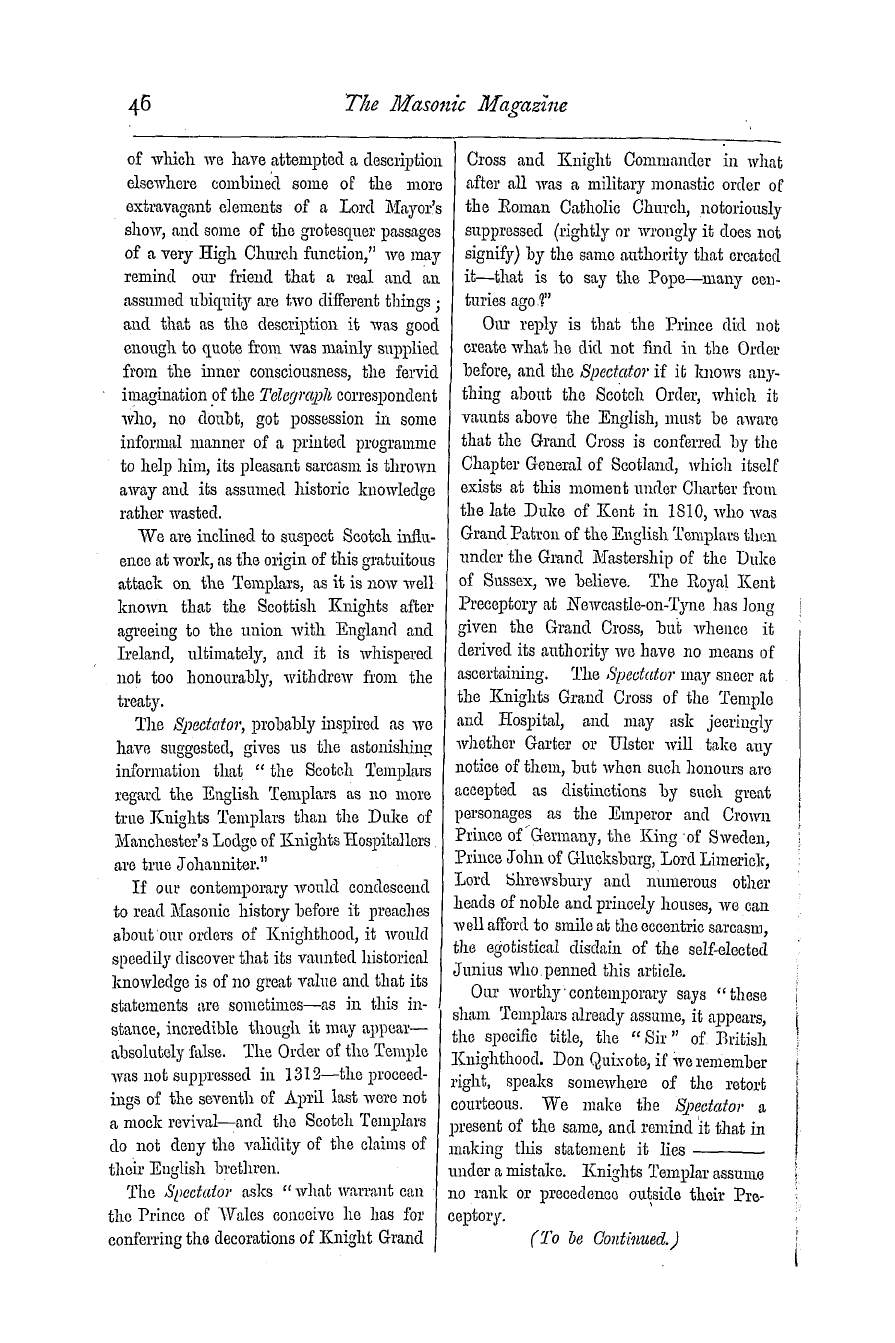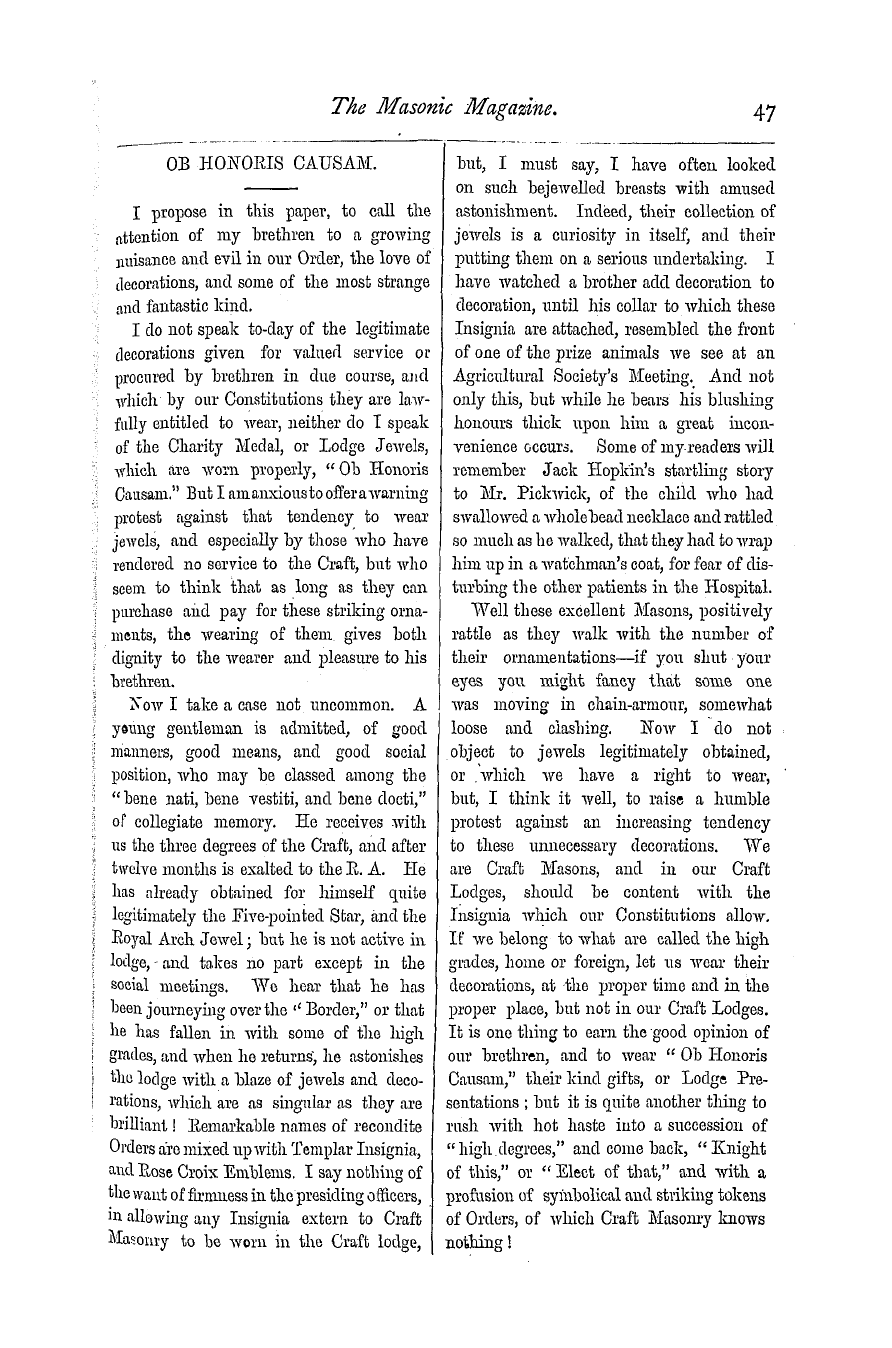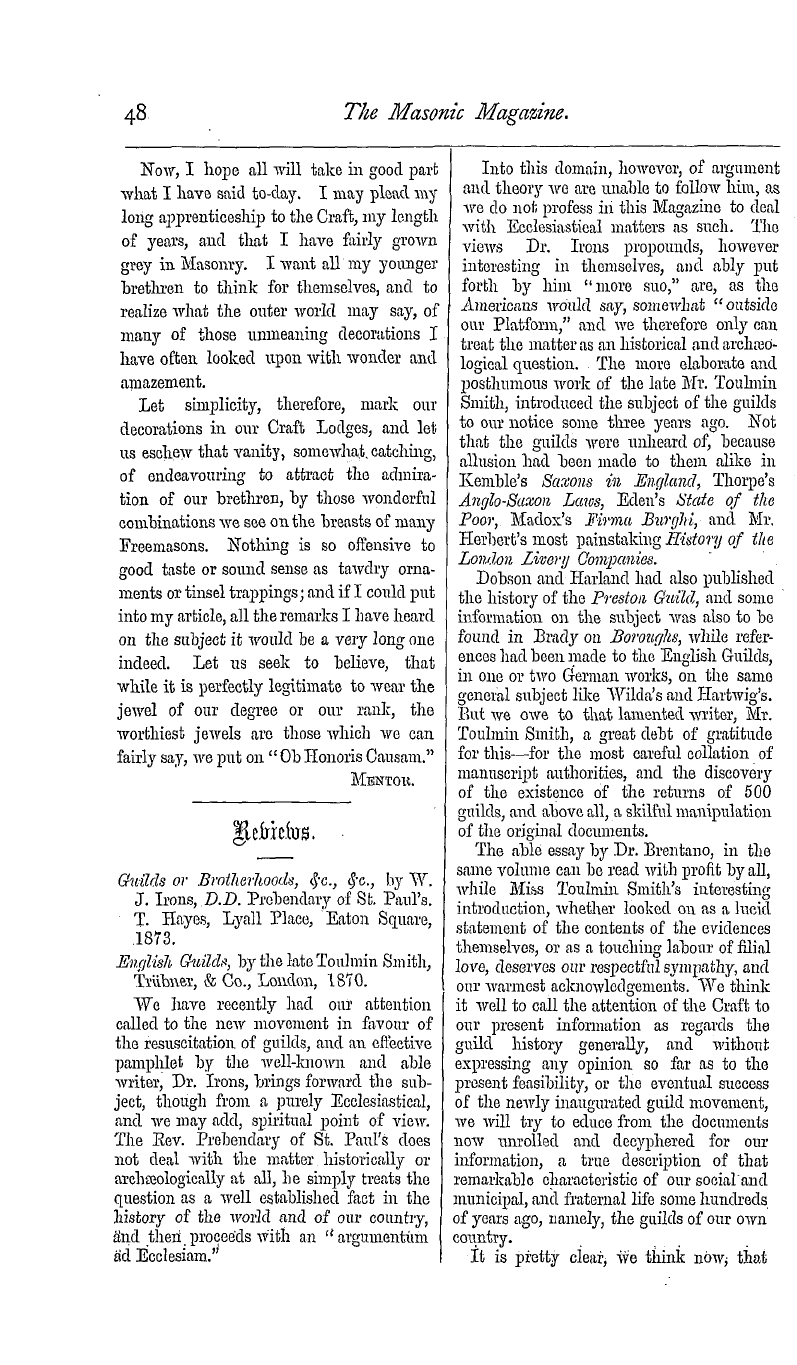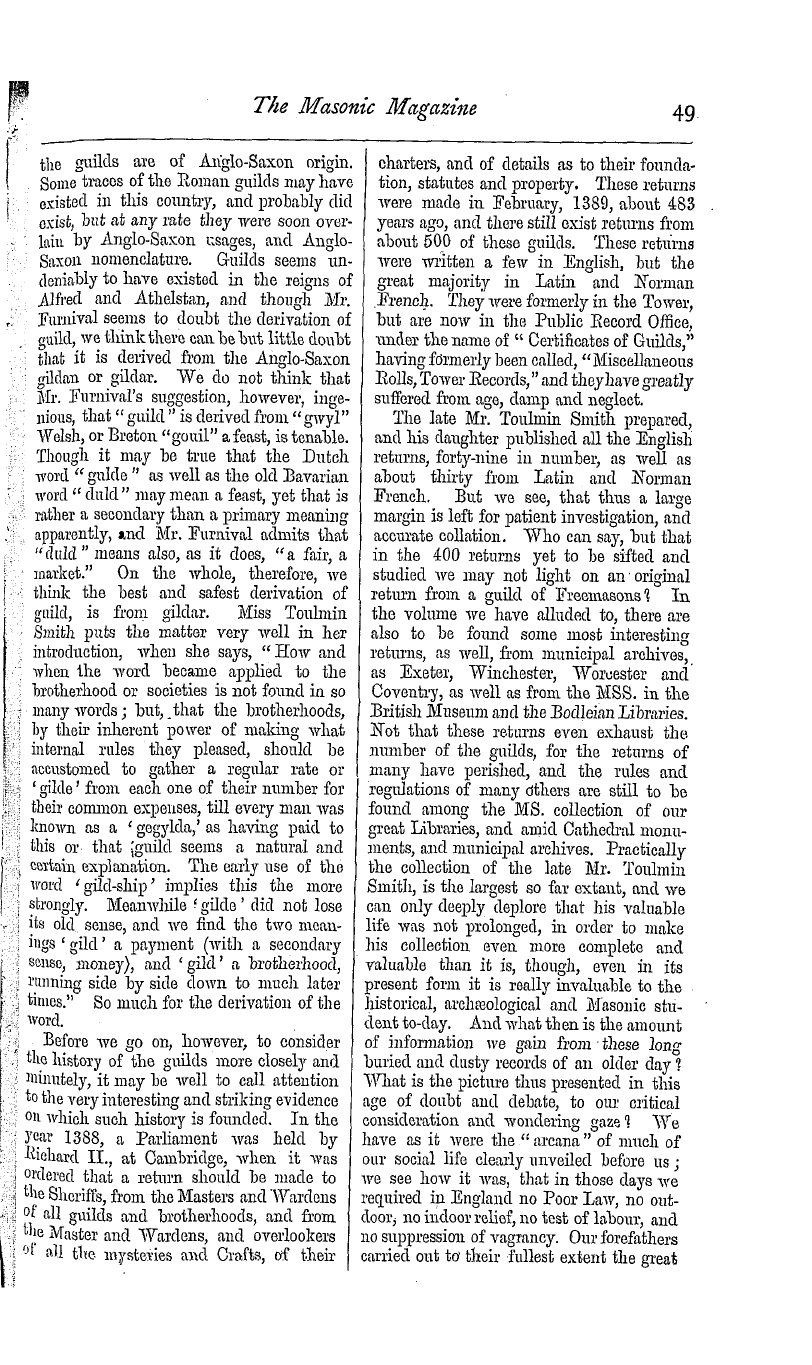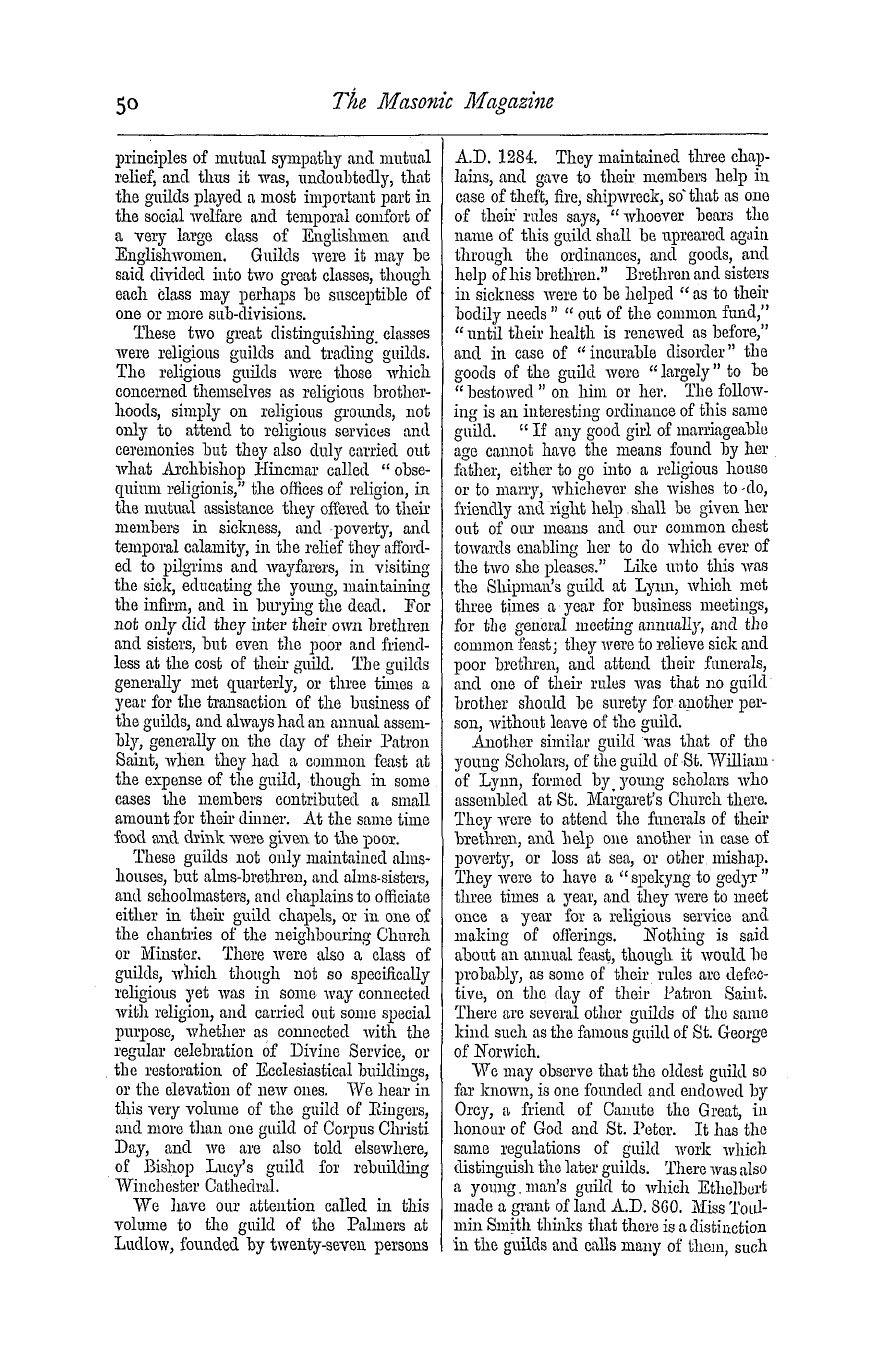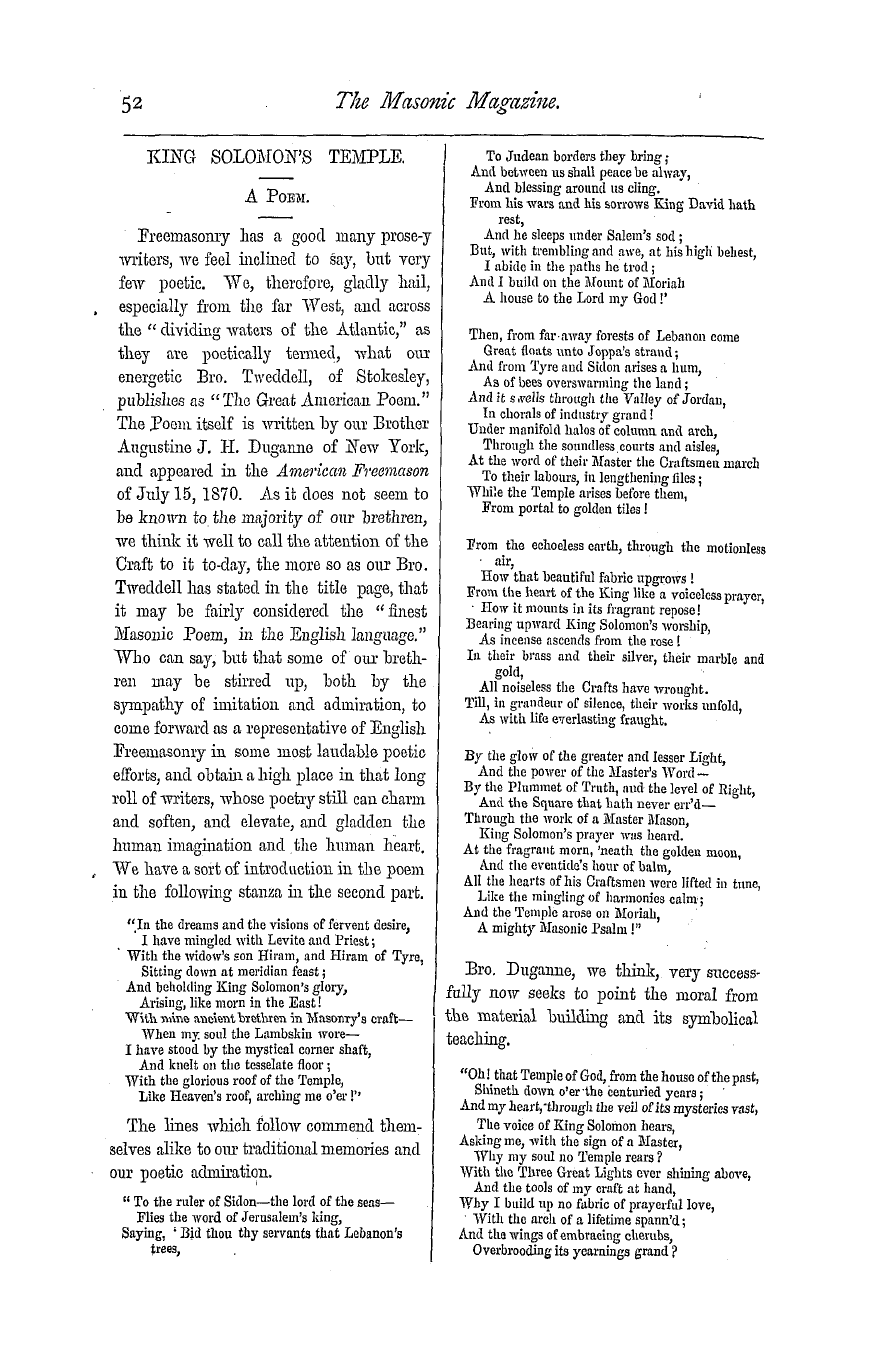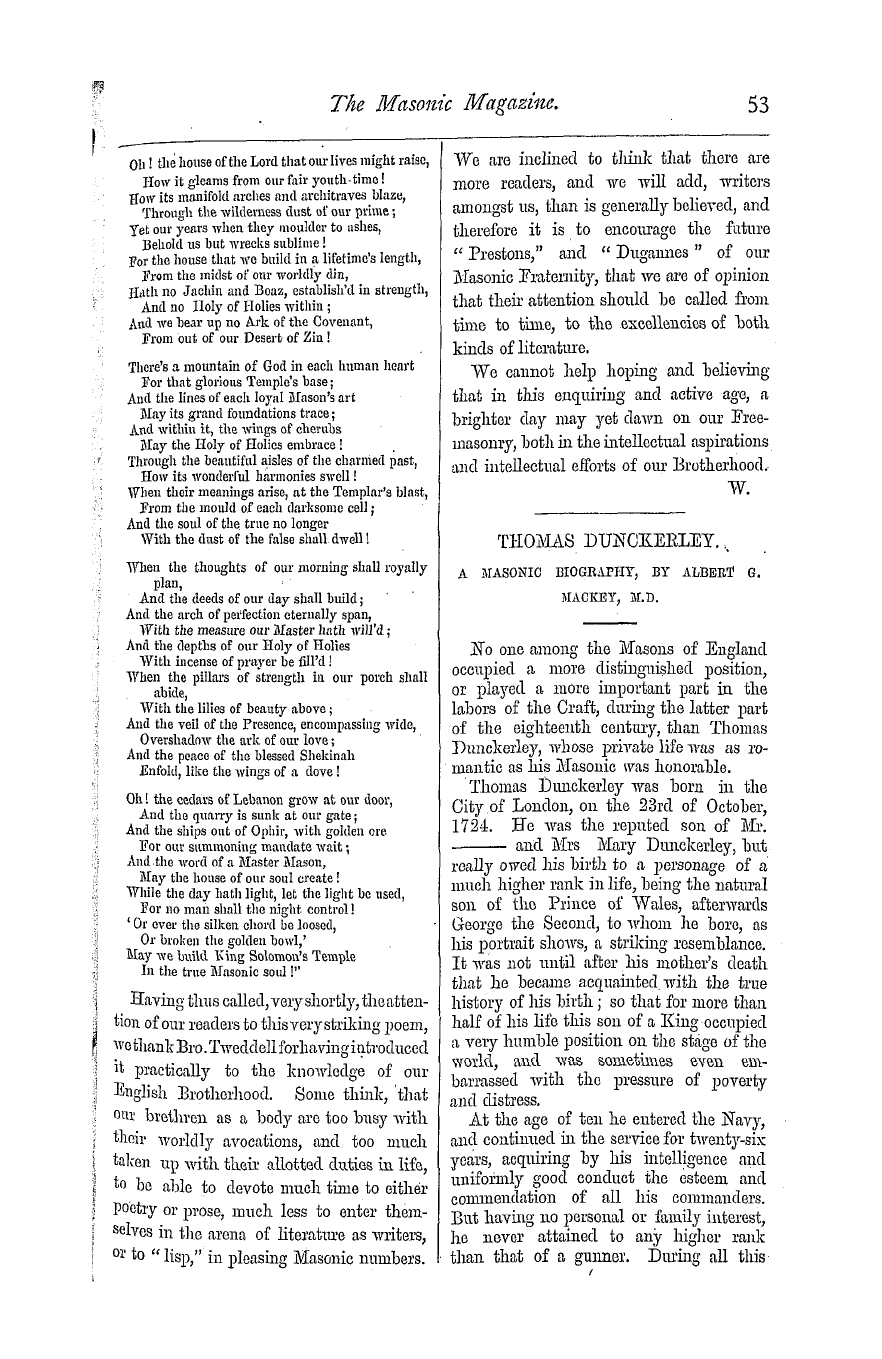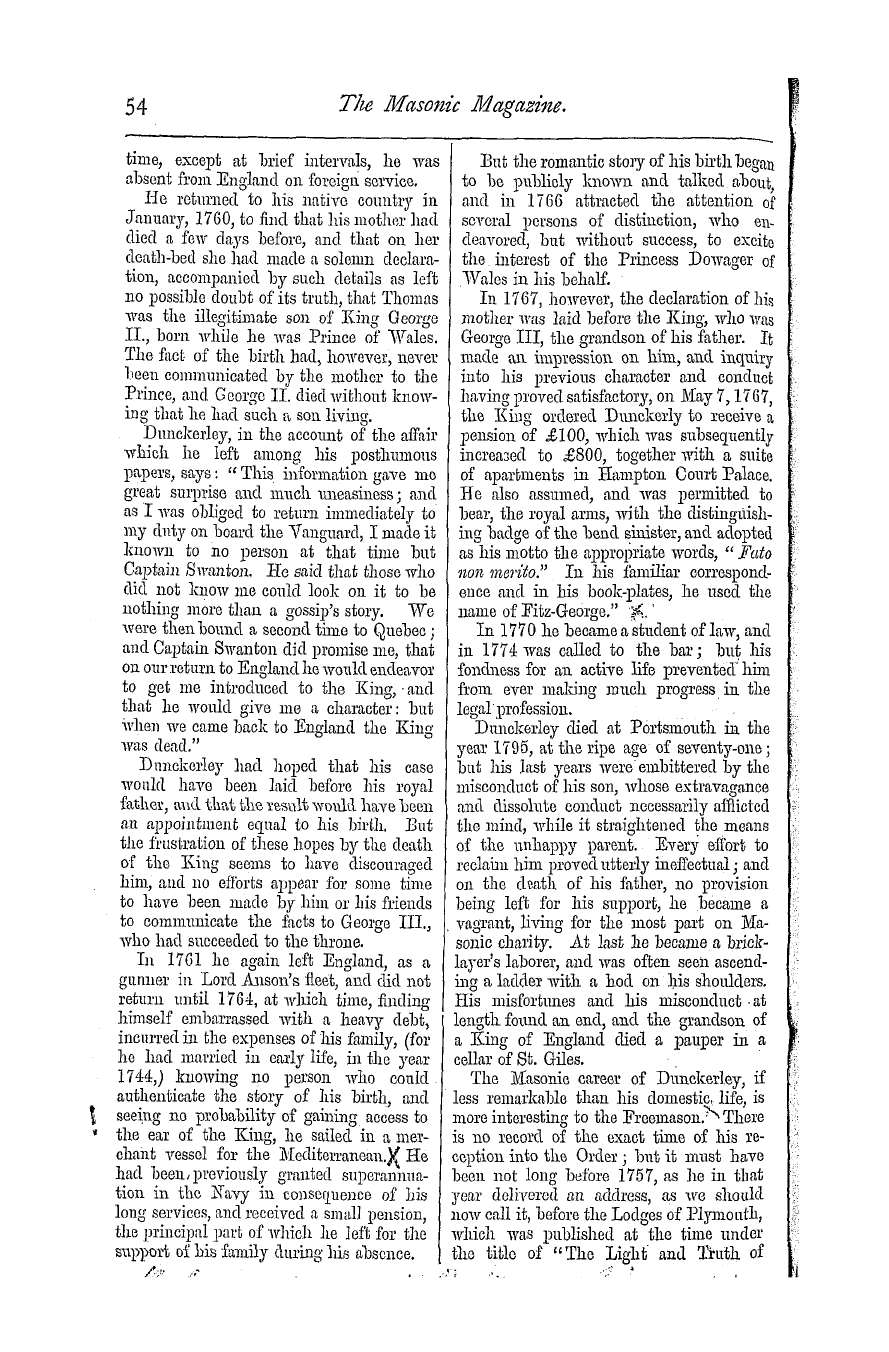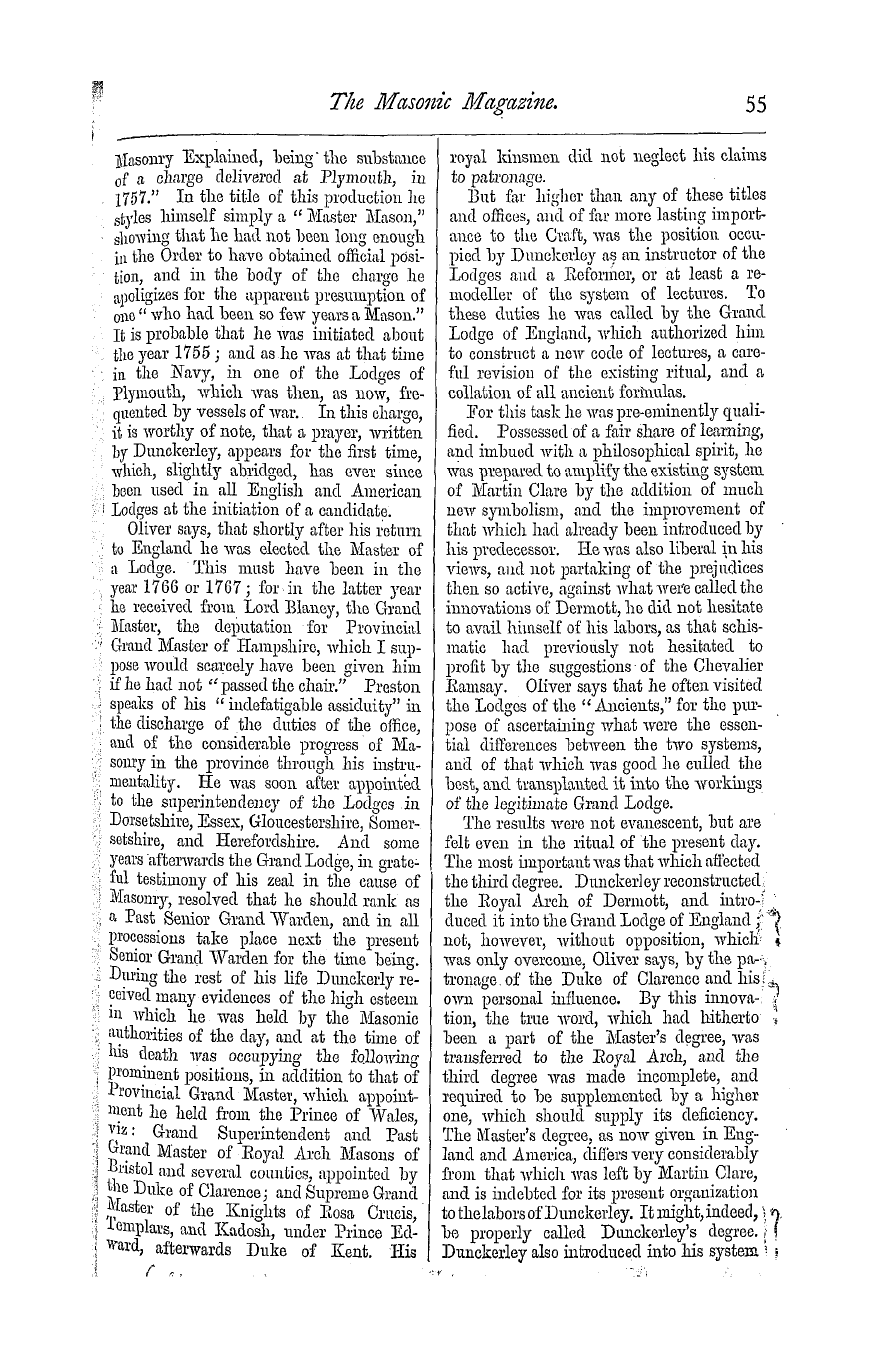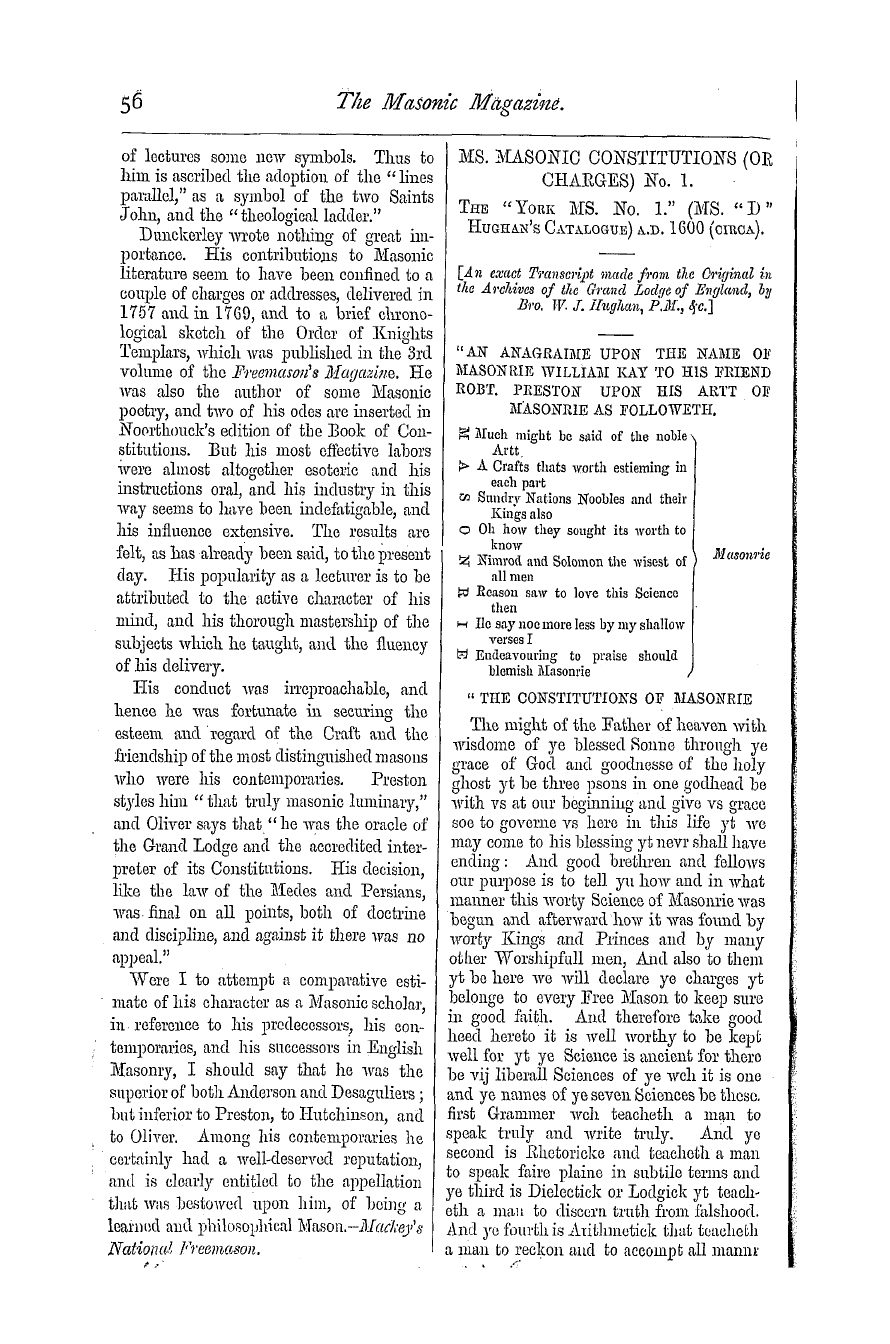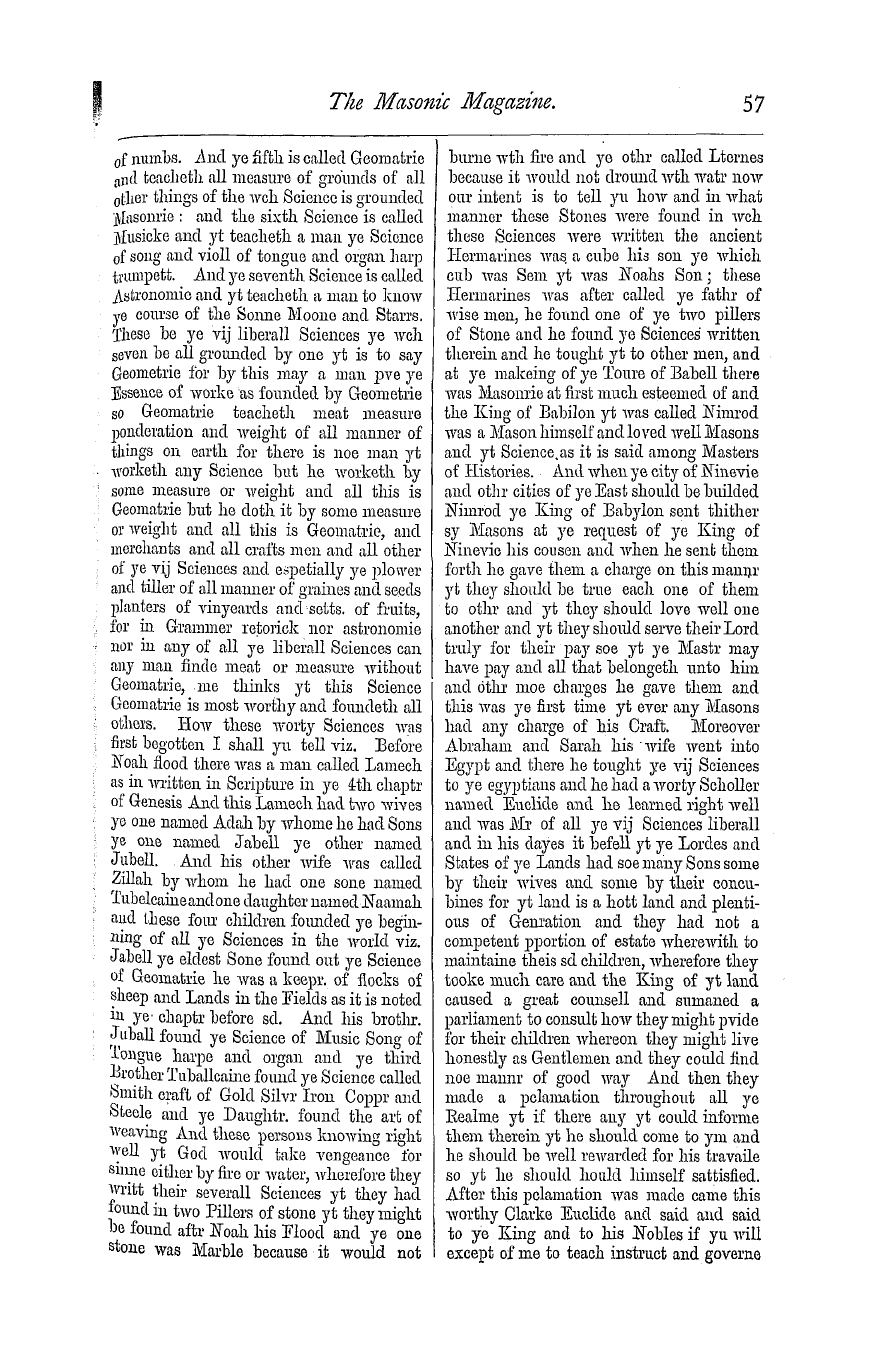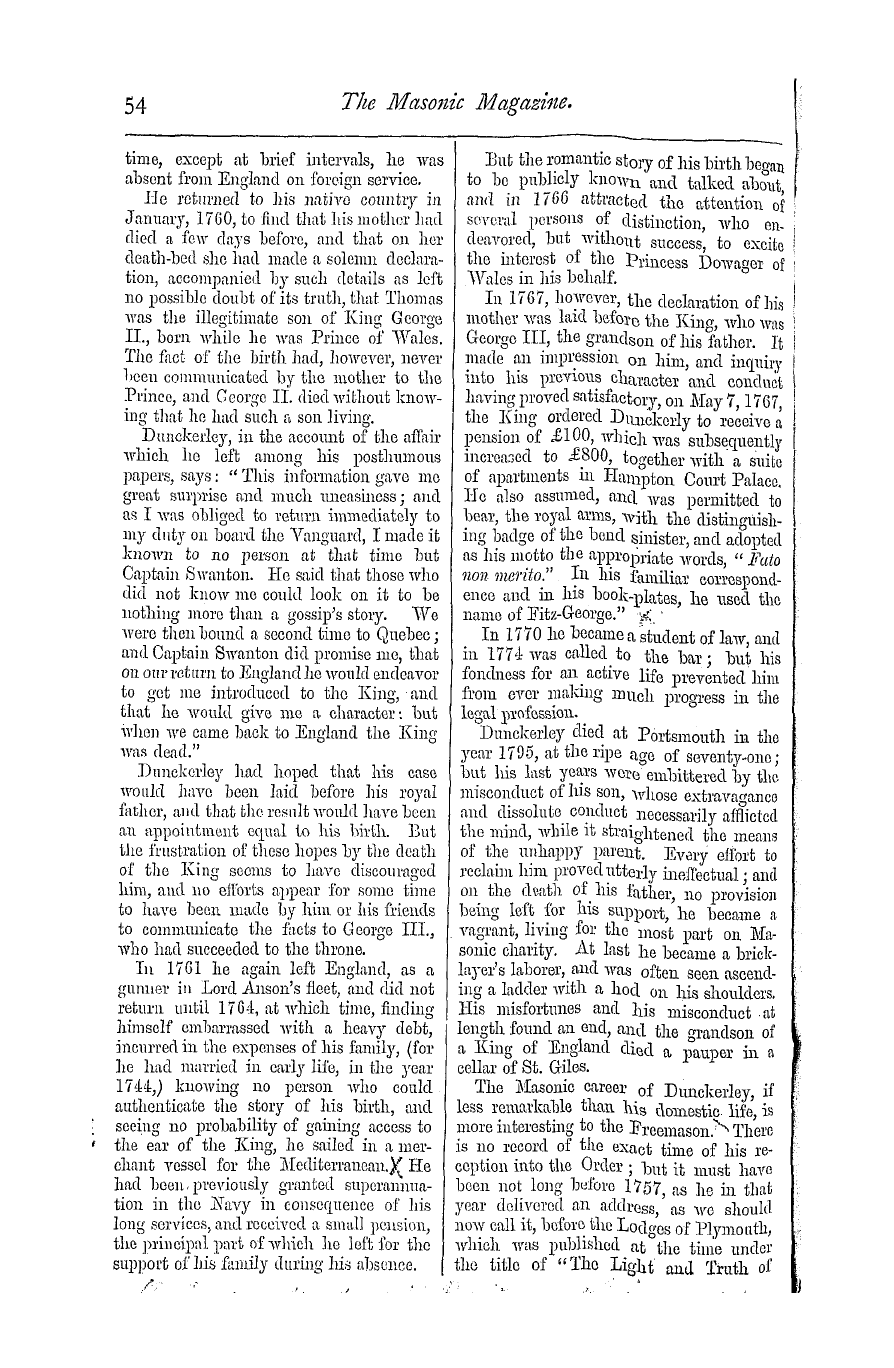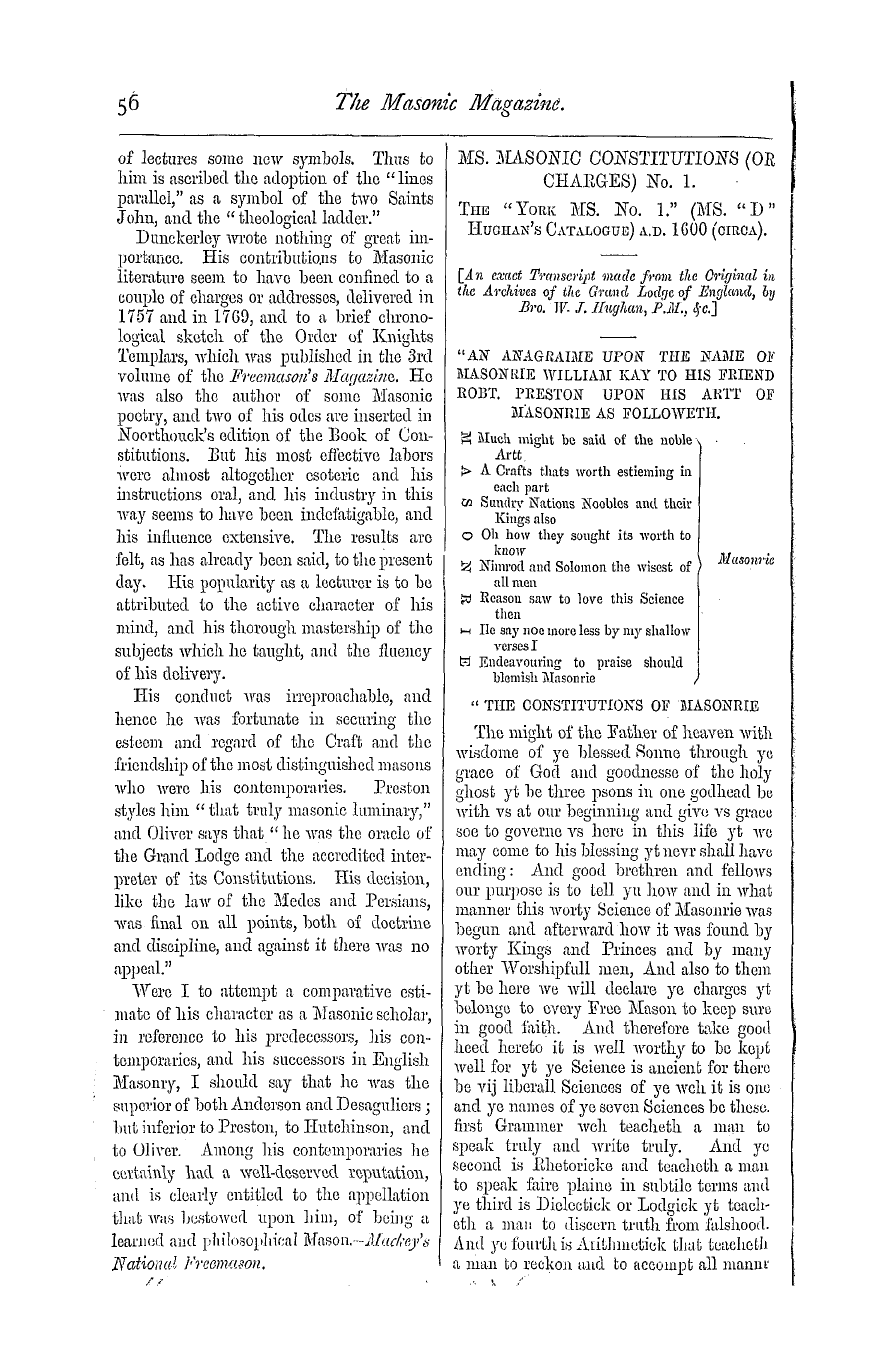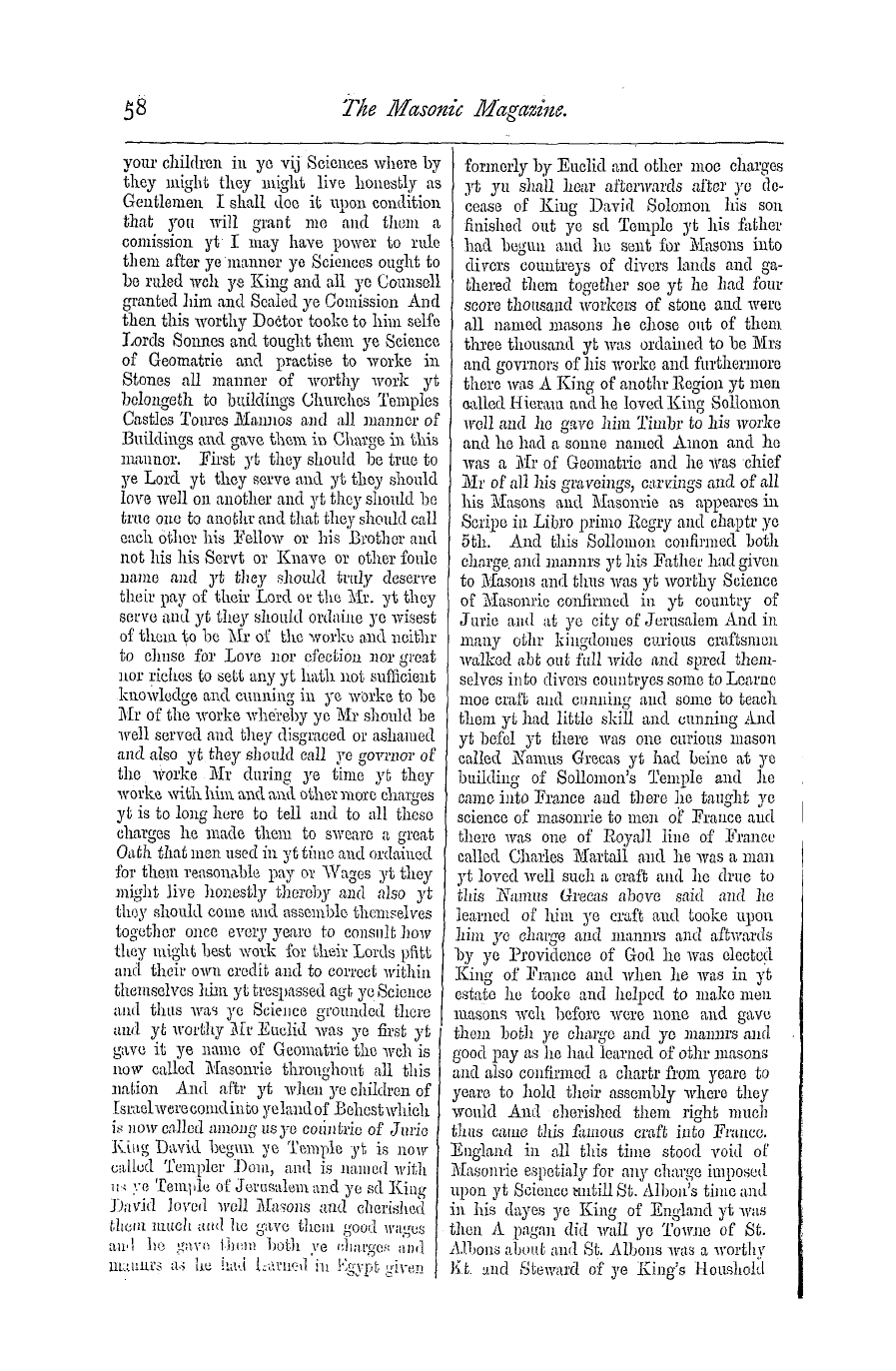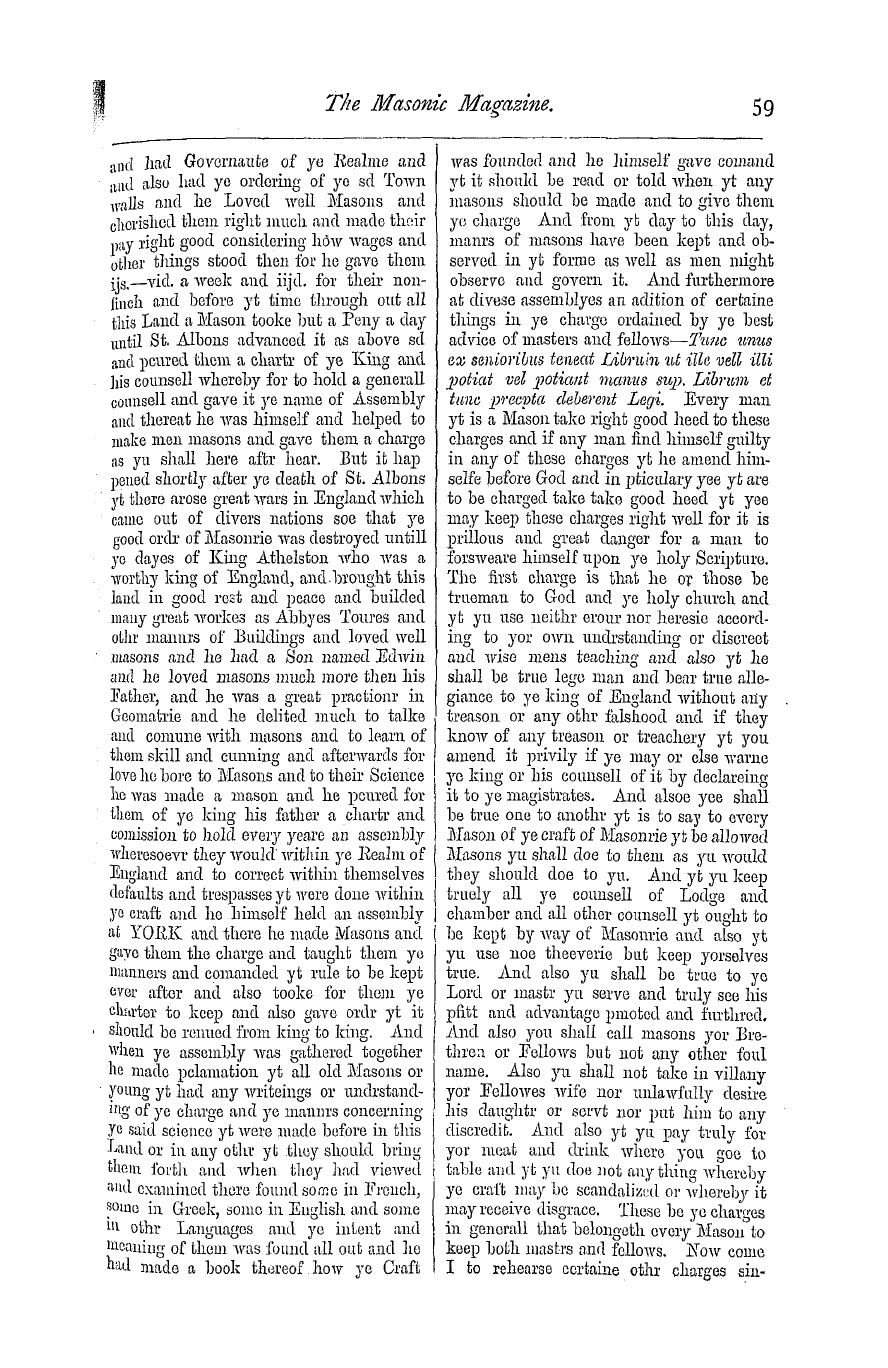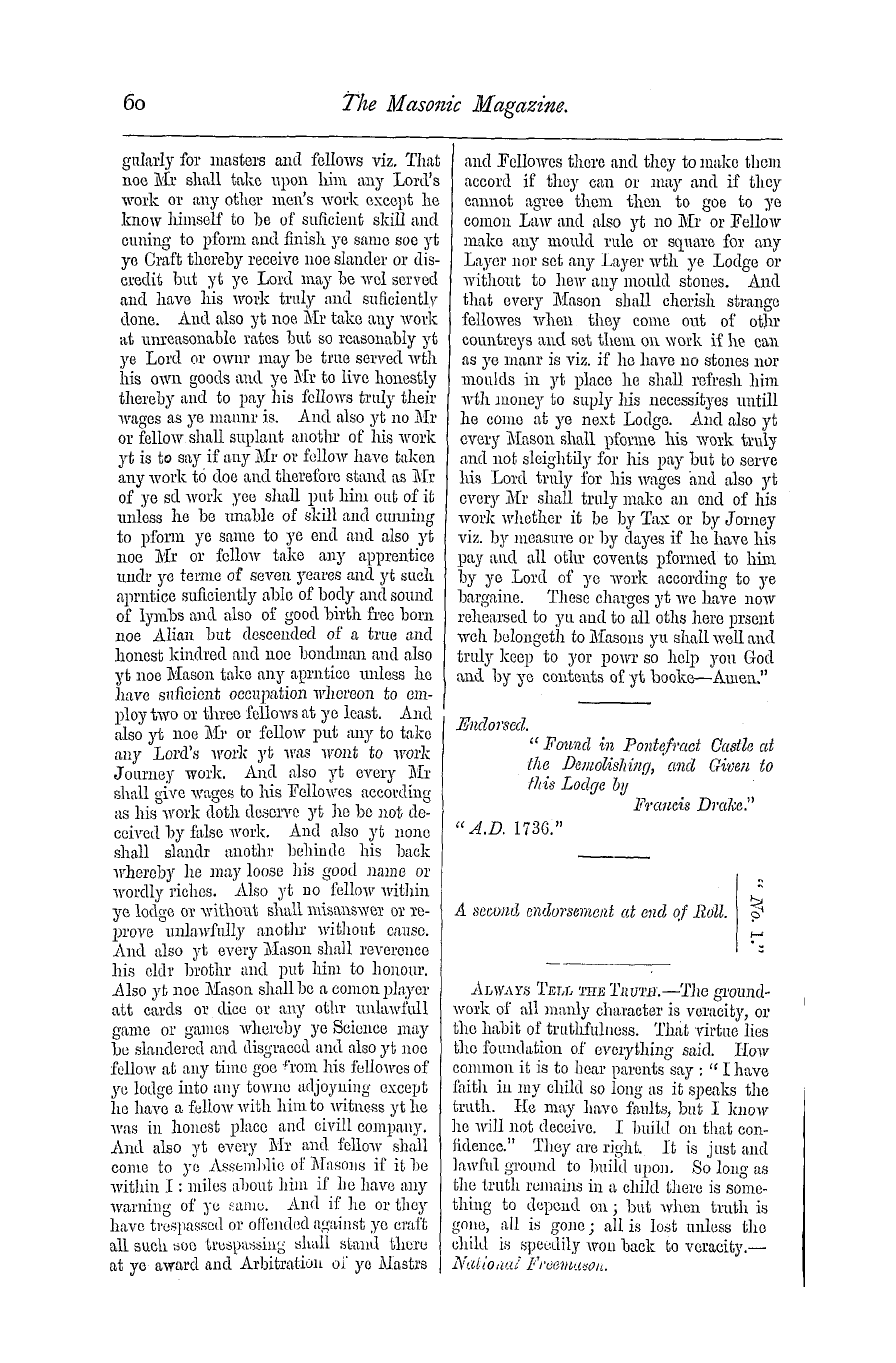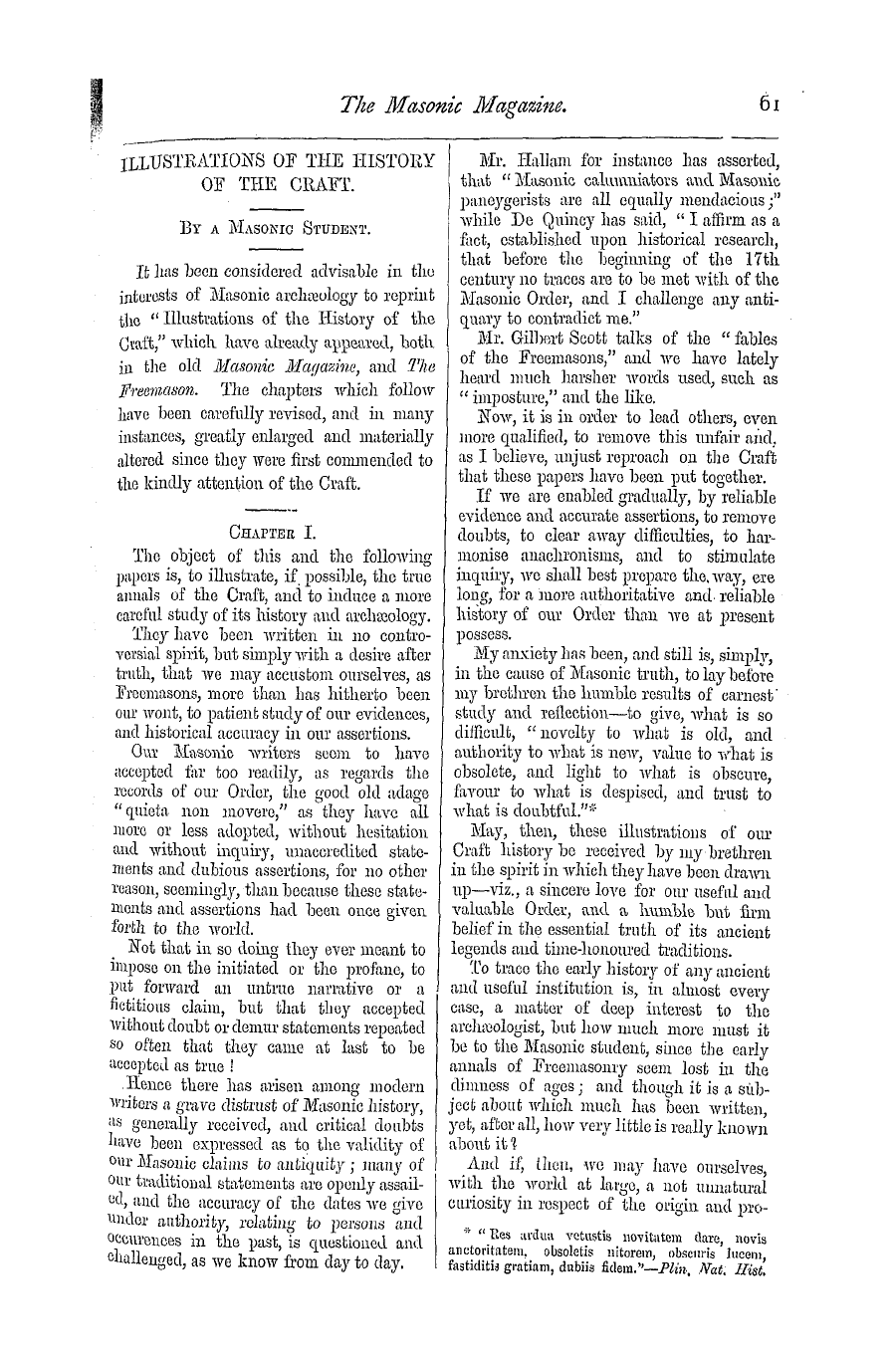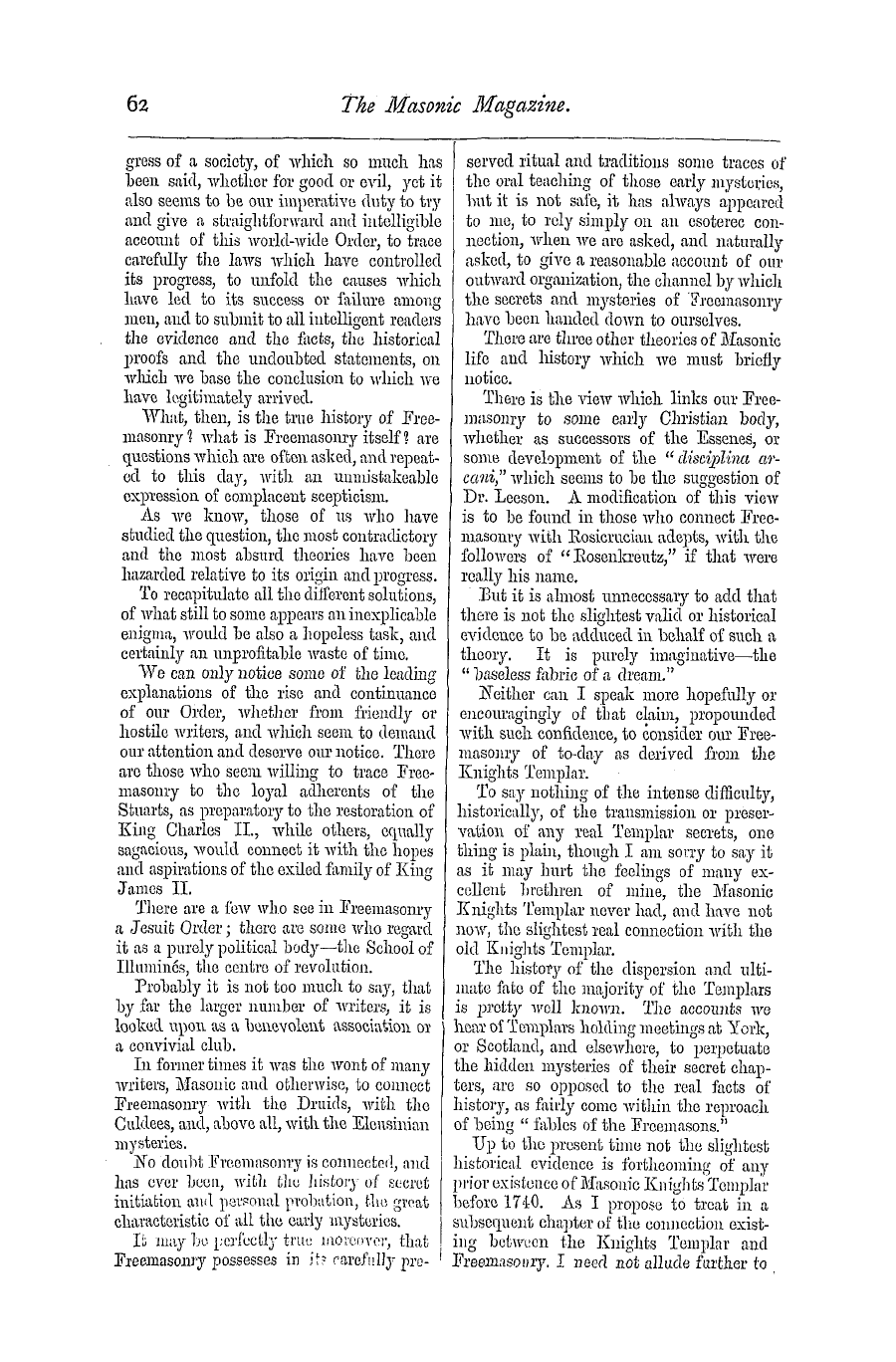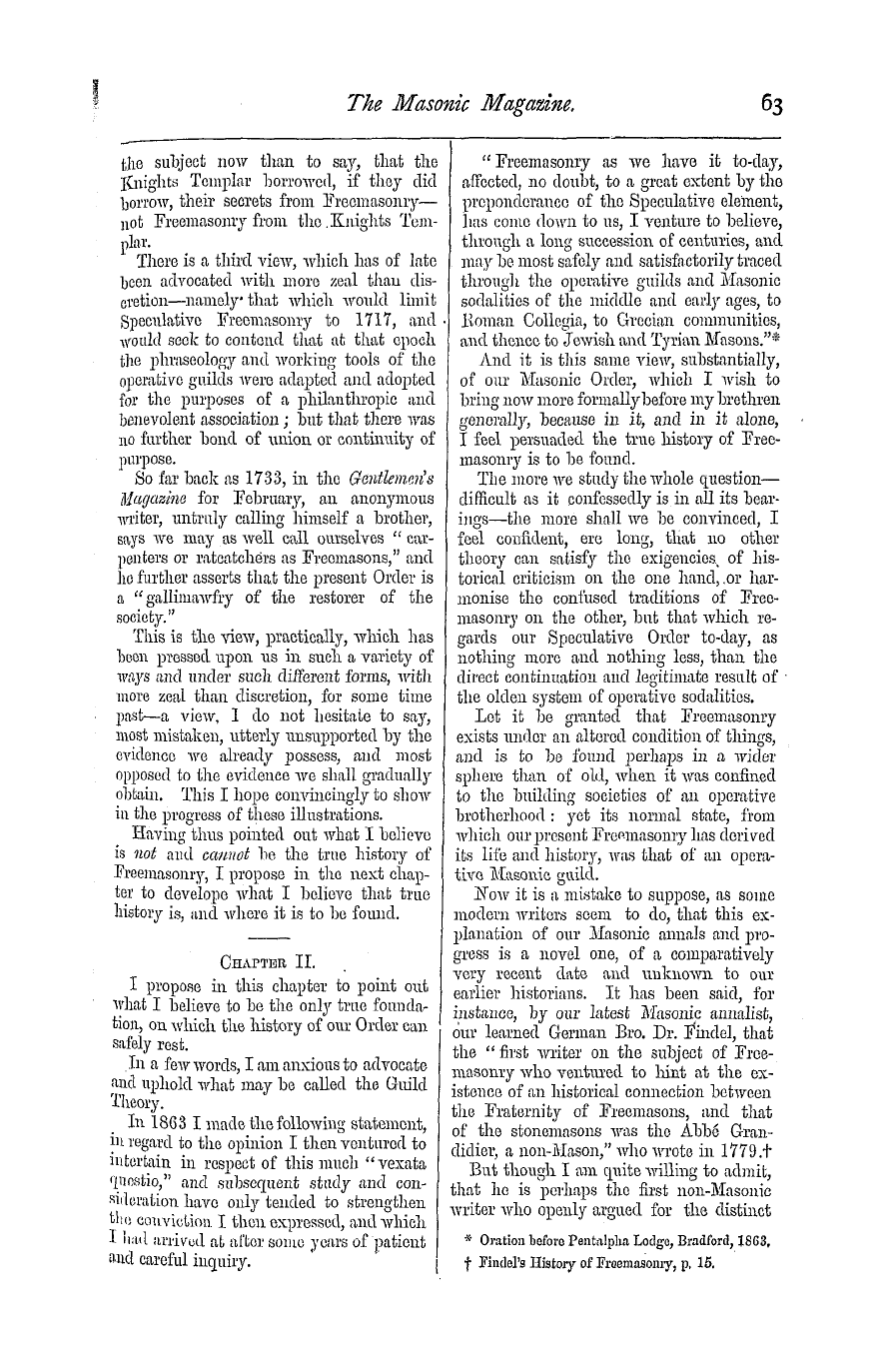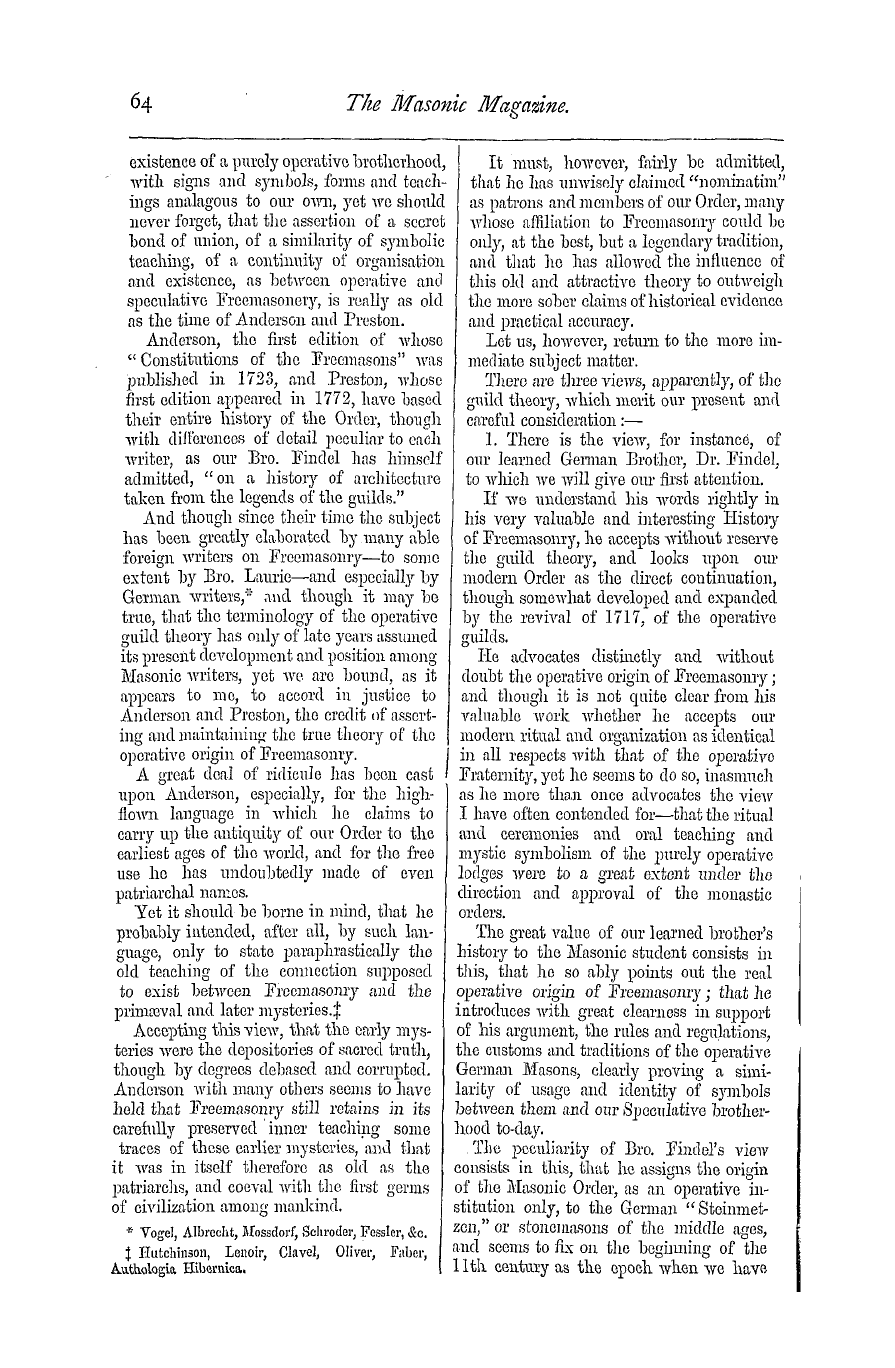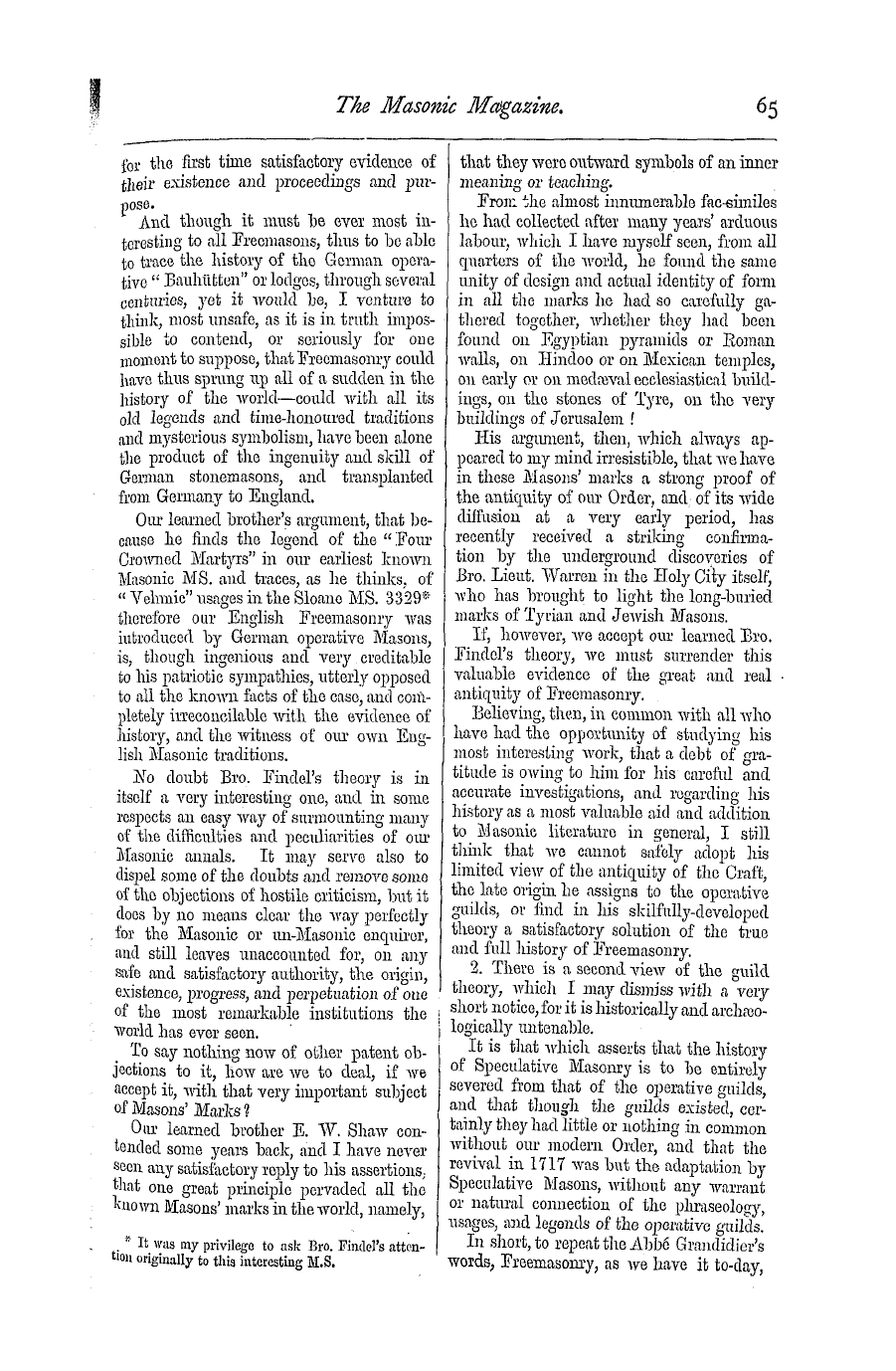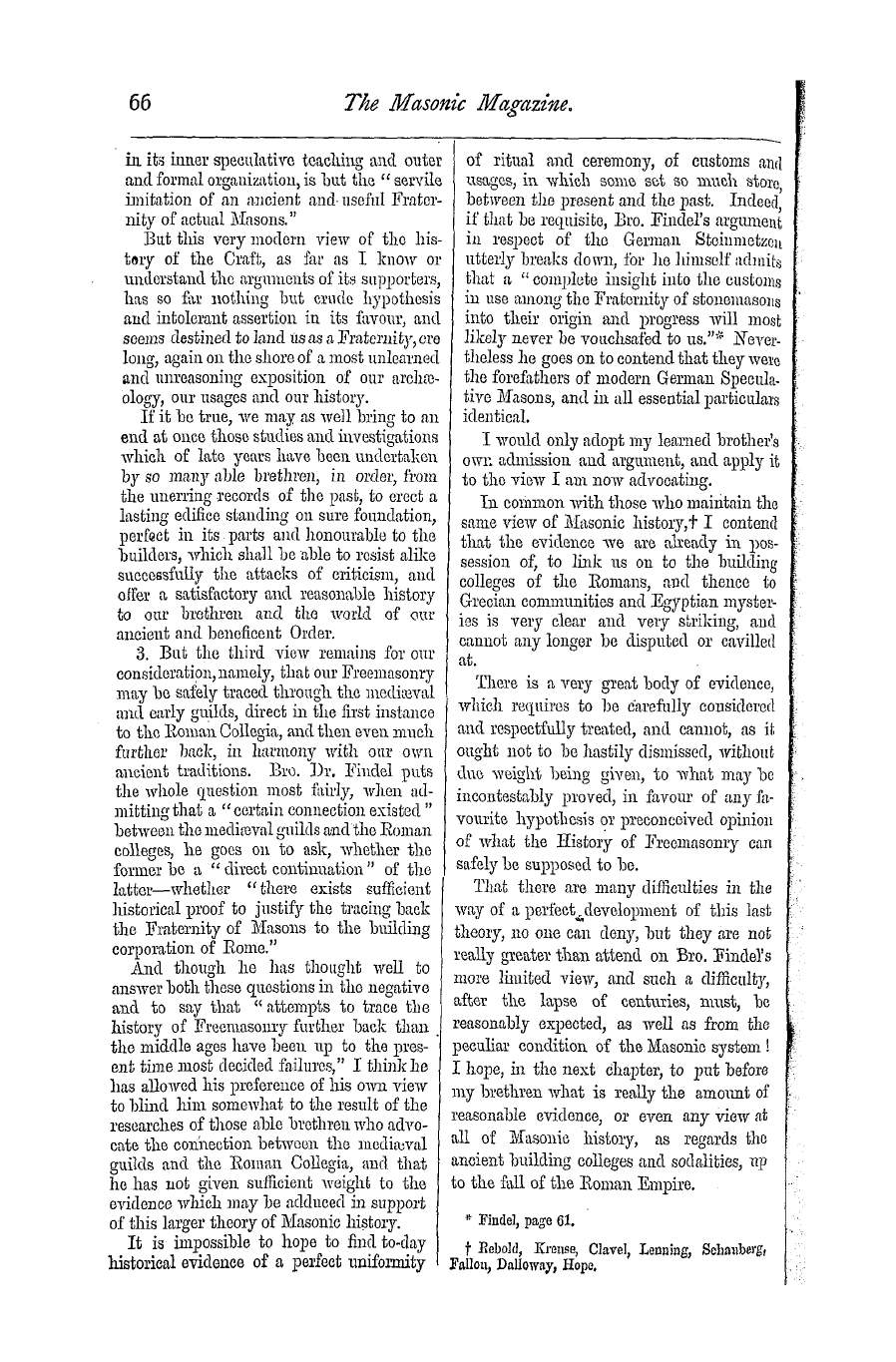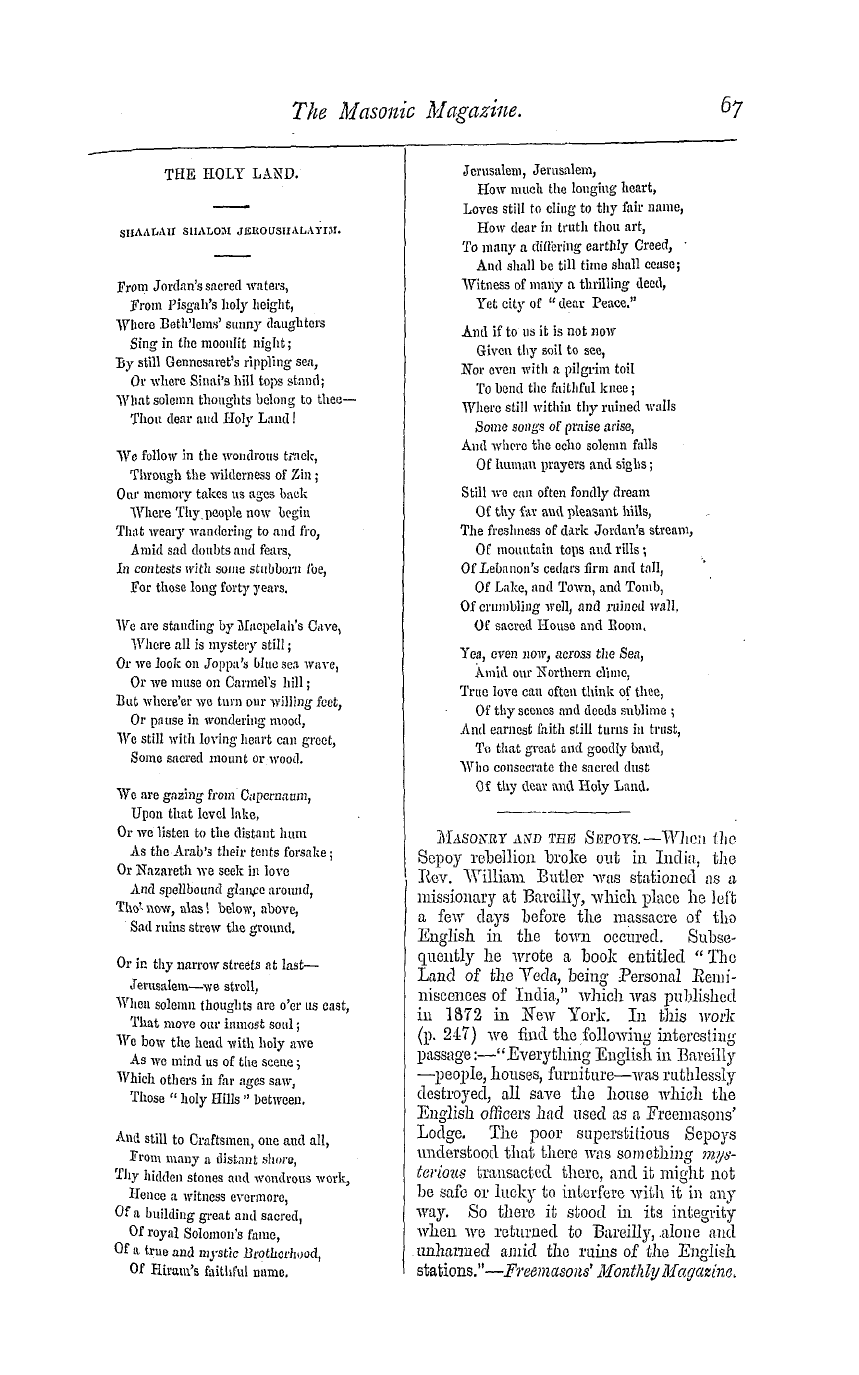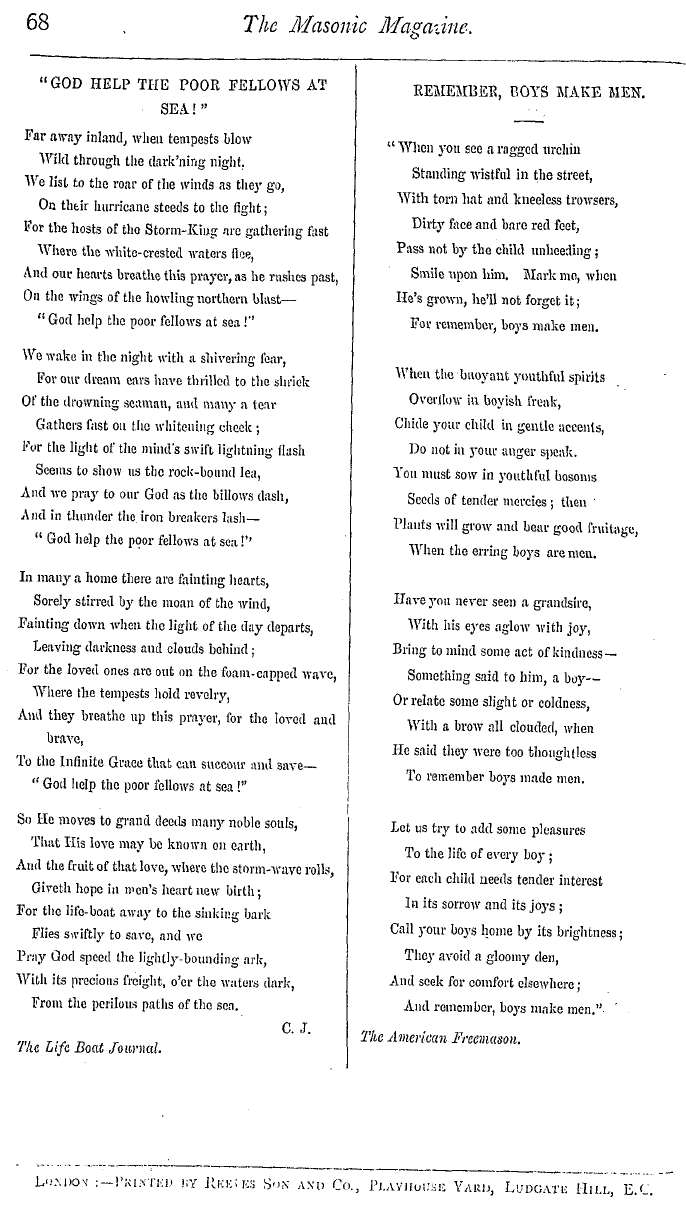-
Articles/Ads
Article ILLUSTRATIONS OF THE HISTORY OF THE CRAFT. ← Page 4 of 6 →
Note: This text has been automatically extracted via Optical Character Recognition (OCR) software.
Illustrations Of The History Of The Craft.
existence of a purely operative brotherhood , Avith signs and sjanbols , forms and teachings analagous to our OAAII , yet AVO should noA'cr forget , that the assertion of a secret bond of union , of a similarity of symbolic teaching , of a continuity of organisation
ancl existence , as betAVcen operative and speculative Freemasonery , is really as old as the time of Anderson and Preston . Anderson , the first edition of AA'hoso " Constitutions of the Freemasons" Avas published in 1723 ancl PrestonAvhose
, , first edition appeared in 1772 , have based their entire history of the Order , though with differences of detail peculiar to each writer , as our Bro . Findel has himself admitted , " on a history of architecture taken from the legends of the guilds . "
Ancl though since their time tho subject has been greatly elaborated by many able foreign AA'riters on Freemasonry—to some extent by Bro . Laurie—ancl especially by German writers , ' - ' and though it may bo true , that the terminology of the operative guild theory has only of late years assumed its present development and position among Masonic AA'riters , vet Ave aro bound , as it
appears to mo , to accord in justice to Anderson and Preston , the credit of assorting and maintaining the true theory of tho operative origin of Freemasonry . A great deal of ridicule has boon cast upon Andersonespecially , for the hi
gh-, floAA'ii language in AA'hicli ho claims to carry up the antiquity of our Order to the earliest ages of the Avorld , and for tlie free use ho has undoubtedly made of even patriarchal names . Yet it should be borne in mind , that he
probably intended , after all , by such language , only to state paraphrastically the old teaching of the connection supposed to exist between Freemasonry and the primaival and later mysteries . ; f Accepting this view , that the early
mysteries Avere the depositories of sacred truth , though by degrees debased and corrupted . Anderson Avitli many others seems to have held that Freemasonry still retains in its carefully preserved inner teaching some traces of these earlier mysteries , and that it AA'as in itself therefore as old as the patriarchs , and cooA-al Avith the first germs of civilization among mankind .
It must , hoAvever , fairly be admitted , that ho has unwisely claimed " nominatim " as patrons and members of our Order , many AA'hose affiliation to Freemasonry could bo only , at the best , but a legendary tradition , ancl that ho has alloAvocl the influence of
this old and attractive theory to outweigh the more sober claims of historical evidence and practical accuracy . Let us , hoAvevor , return to the more immediate subject matter . There are three AUCAVS , apparently , of tho
guild theory , AA'hicli merit our present and careful consideration : — 1 . There is the vieAv , for instance , of our learned German Brother , Dr . Findel , to Avhich Ave will give our first attention . If we understand Ms Avoids rightly in
his very A'aluable and interesting History of Freemasonry , he accepts AA'ithout reserve the guild theory , and looks upon our modern Order as the direct continuation , though someAA'hat deA'eloped and expanded by the revival of 1717 of the operative
, guilds . lie advocates distinctly ancl AA'ithout doubt tho operative origin of Freemasonry ; and though it is not quite clear from his valuable work AA'hether he accepts our modern ritual and organization as identical
in ah respiects Avith that of the ojjerath'O Fraternity , yet he seems to do so , inasmuch as he more than once advocates the vieAv I have often contended for—that the ritual and ceremonies and oral teaching and mystic symbolism of the 2 'urely operative lodges Avere to a great extent under tho direction and approval of the monastic orders .
The great value of our learned brother ' s history to the Masonic student consists in this , that ho so ably points out the real operative origin of Freemasonry ; that lie introduces AA'ith great clearness in support of his argumentthe rules and regulations
, , the customs and traditions of the operative German Masons , clearly proving a similarity of usage and identity of symbols betiveen them and our SpeculatiA'e brotherhood to-daj ' . The peculiarity of Bro . Findel ' s vieAV
consists in this , that he assigns the origin of the Masonic Order , as an operative institution only , to the German " Stoinmetzen , " or stonemasons of the middle ages , ancl seems to fix on the beginning of the 11 th century as the epoch Avhen Ave have
Note: This text has been automatically extracted via Optical Character Recognition (OCR) software.
Illustrations Of The History Of The Craft.
existence of a purely operative brotherhood , Avith signs and sjanbols , forms and teachings analagous to our OAAII , yet AVO should noA'cr forget , that the assertion of a secret bond of union , of a similarity of symbolic teaching , of a continuity of organisation
ancl existence , as betAVcen operative and speculative Freemasonery , is really as old as the time of Anderson and Preston . Anderson , the first edition of AA'hoso " Constitutions of the Freemasons" Avas published in 1723 ancl PrestonAvhose
, , first edition appeared in 1772 , have based their entire history of the Order , though with differences of detail peculiar to each writer , as our Bro . Findel has himself admitted , " on a history of architecture taken from the legends of the guilds . "
Ancl though since their time tho subject has been greatly elaborated by many able foreign AA'riters on Freemasonry—to some extent by Bro . Laurie—ancl especially by German writers , ' - ' and though it may bo true , that the terminology of the operative guild theory has only of late years assumed its present development and position among Masonic AA'riters , vet Ave aro bound , as it
appears to mo , to accord in justice to Anderson and Preston , the credit of assorting and maintaining the true theory of tho operative origin of Freemasonry . A great deal of ridicule has boon cast upon Andersonespecially , for the hi
gh-, floAA'ii language in AA'hicli ho claims to carry up the antiquity of our Order to the earliest ages of the Avorld , and for tlie free use ho has undoubtedly made of even patriarchal names . Yet it should be borne in mind , that he
probably intended , after all , by such language , only to state paraphrastically the old teaching of the connection supposed to exist between Freemasonry and the primaival and later mysteries . ; f Accepting this view , that the early
mysteries Avere the depositories of sacred truth , though by degrees debased and corrupted . Anderson Avitli many others seems to have held that Freemasonry still retains in its carefully preserved inner teaching some traces of these earlier mysteries , and that it AA'as in itself therefore as old as the patriarchs , and cooA-al Avith the first germs of civilization among mankind .
It must , hoAvever , fairly be admitted , that ho has unwisely claimed " nominatim " as patrons and members of our Order , many AA'hose affiliation to Freemasonry could bo only , at the best , but a legendary tradition , ancl that ho has alloAvocl the influence of
this old and attractive theory to outweigh the more sober claims of historical evidence and practical accuracy . Let us , hoAvevor , return to the more immediate subject matter . There are three AUCAVS , apparently , of tho
guild theory , AA'hicli merit our present and careful consideration : — 1 . There is the vieAv , for instance , of our learned German Brother , Dr . Findel , to Avhich Ave will give our first attention . If we understand Ms Avoids rightly in
his very A'aluable and interesting History of Freemasonry , he accepts AA'ithout reserve the guild theory , and looks upon our modern Order as the direct continuation , though someAA'hat deA'eloped and expanded by the revival of 1717 of the operative
, guilds . lie advocates distinctly ancl AA'ithout doubt tho operative origin of Freemasonry ; and though it is not quite clear from his valuable work AA'hether he accepts our modern ritual and organization as identical
in ah respiects Avith that of the ojjerath'O Fraternity , yet he seems to do so , inasmuch as he more than once advocates the vieAv I have often contended for—that the ritual and ceremonies and oral teaching and mystic symbolism of the 2 'urely operative lodges Avere to a great extent under tho direction and approval of the monastic orders .
The great value of our learned brother ' s history to the Masonic student consists in this , that ho so ably points out the real operative origin of Freemasonry ; that lie introduces AA'ith great clearness in support of his argumentthe rules and regulations
, , the customs and traditions of the operative German Masons , clearly proving a similarity of usage and identity of symbols betiveen them and our SpeculatiA'e brotherhood to-daj ' . The peculiarity of Bro . Findel ' s vieAV
consists in this , that he assigns the origin of the Masonic Order , as an operative institution only , to the German " Stoinmetzen , " or stonemasons of the middle ages , ancl seems to fix on the beginning of the 11 th century as the epoch Avhen Ave have

